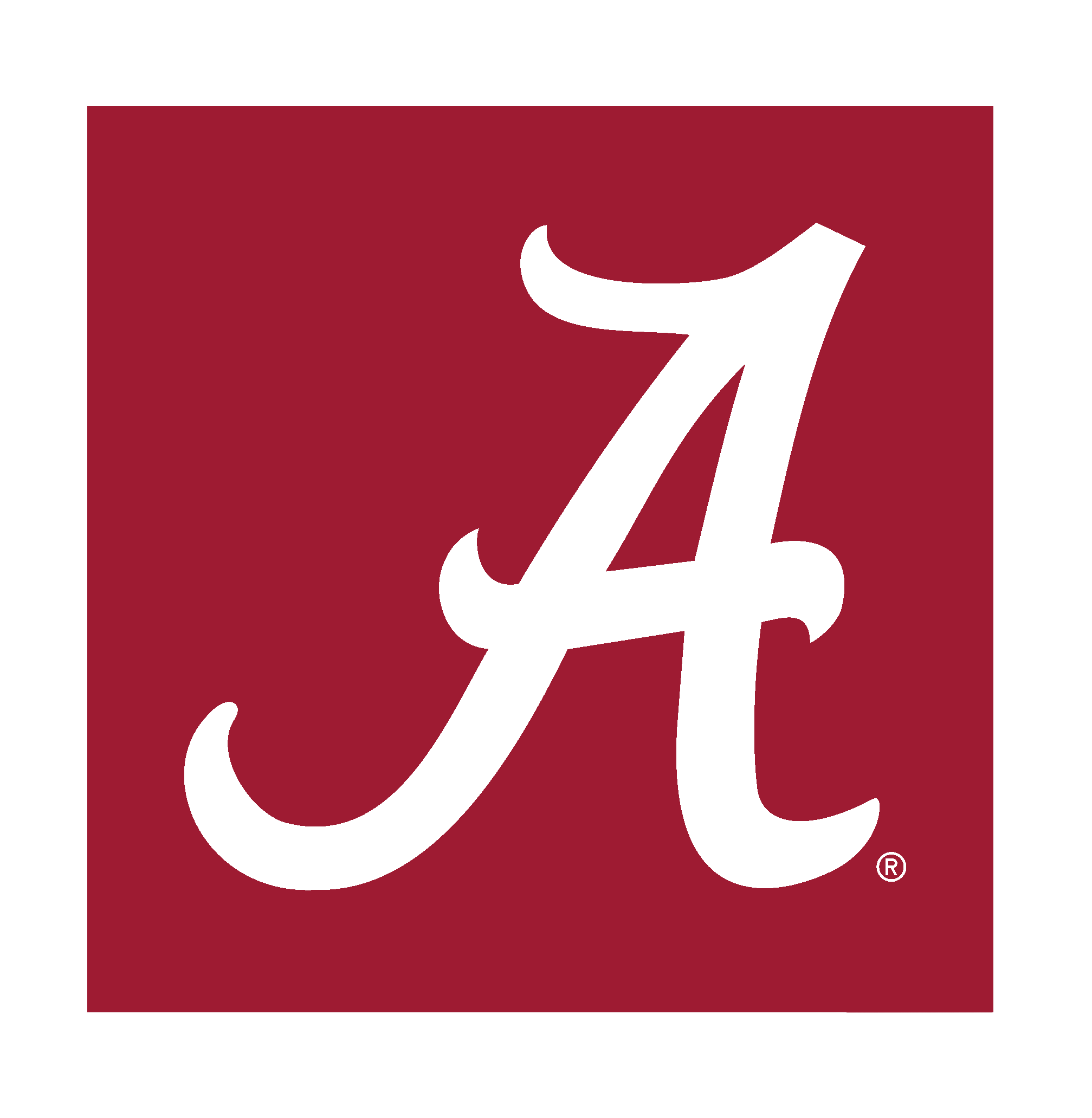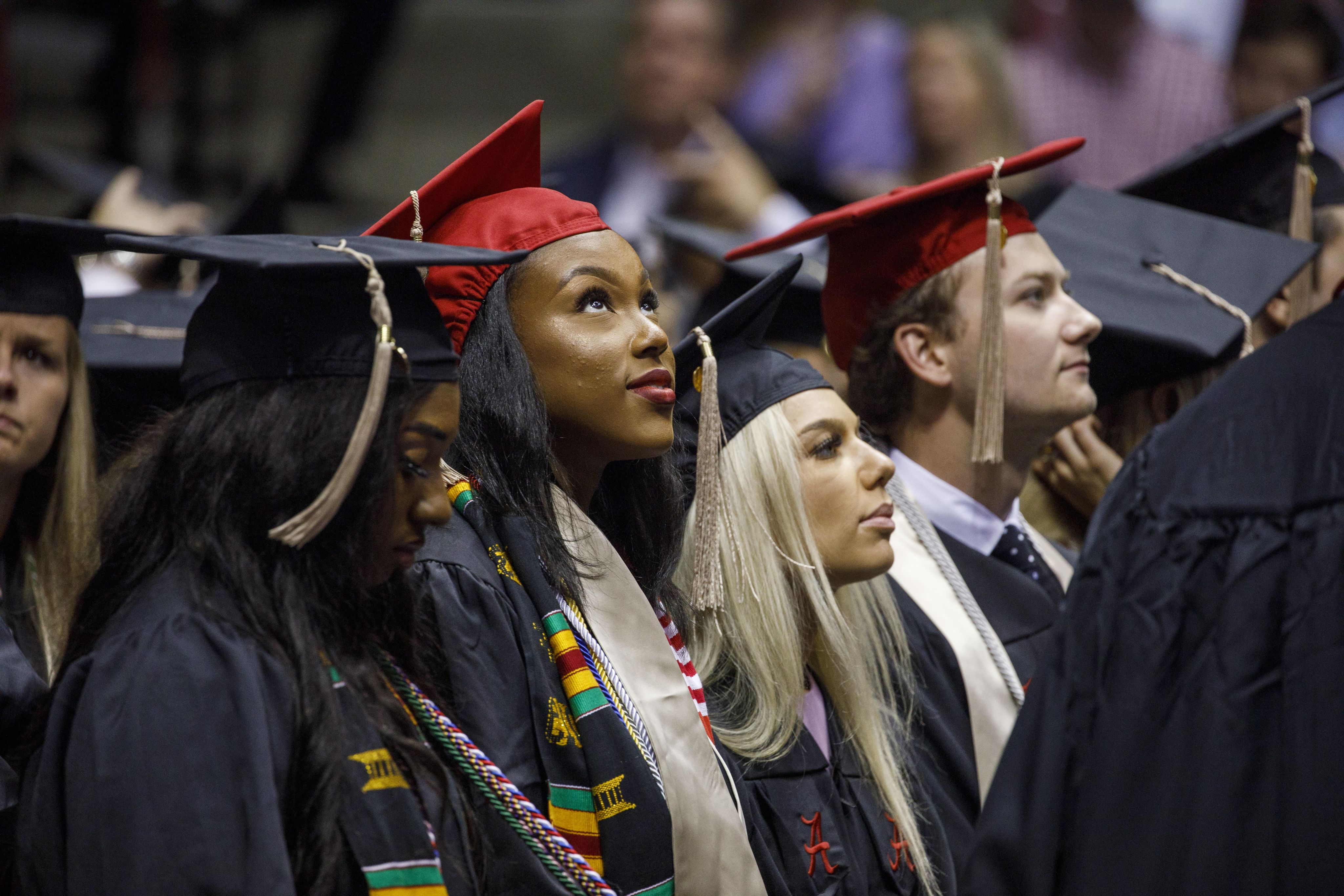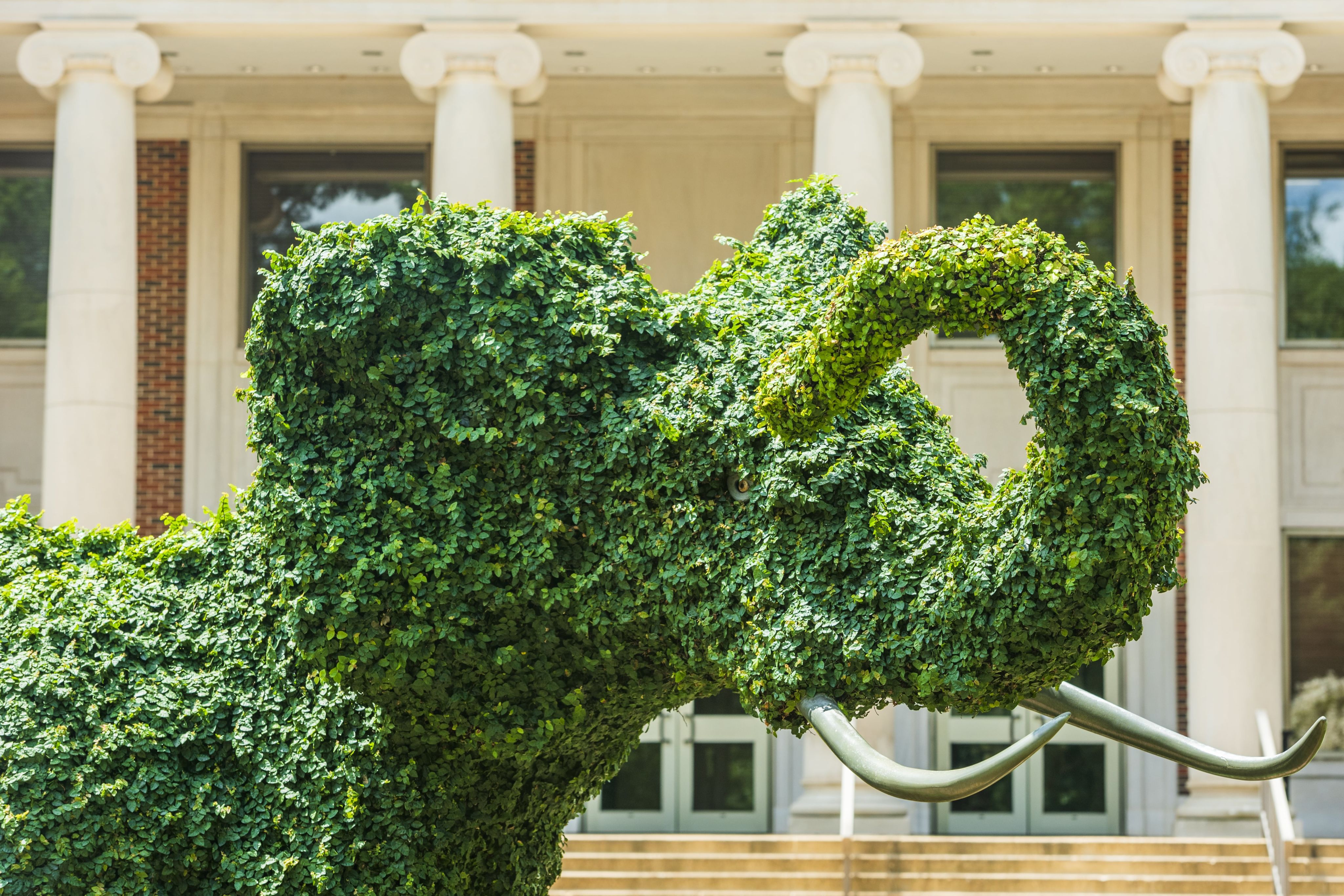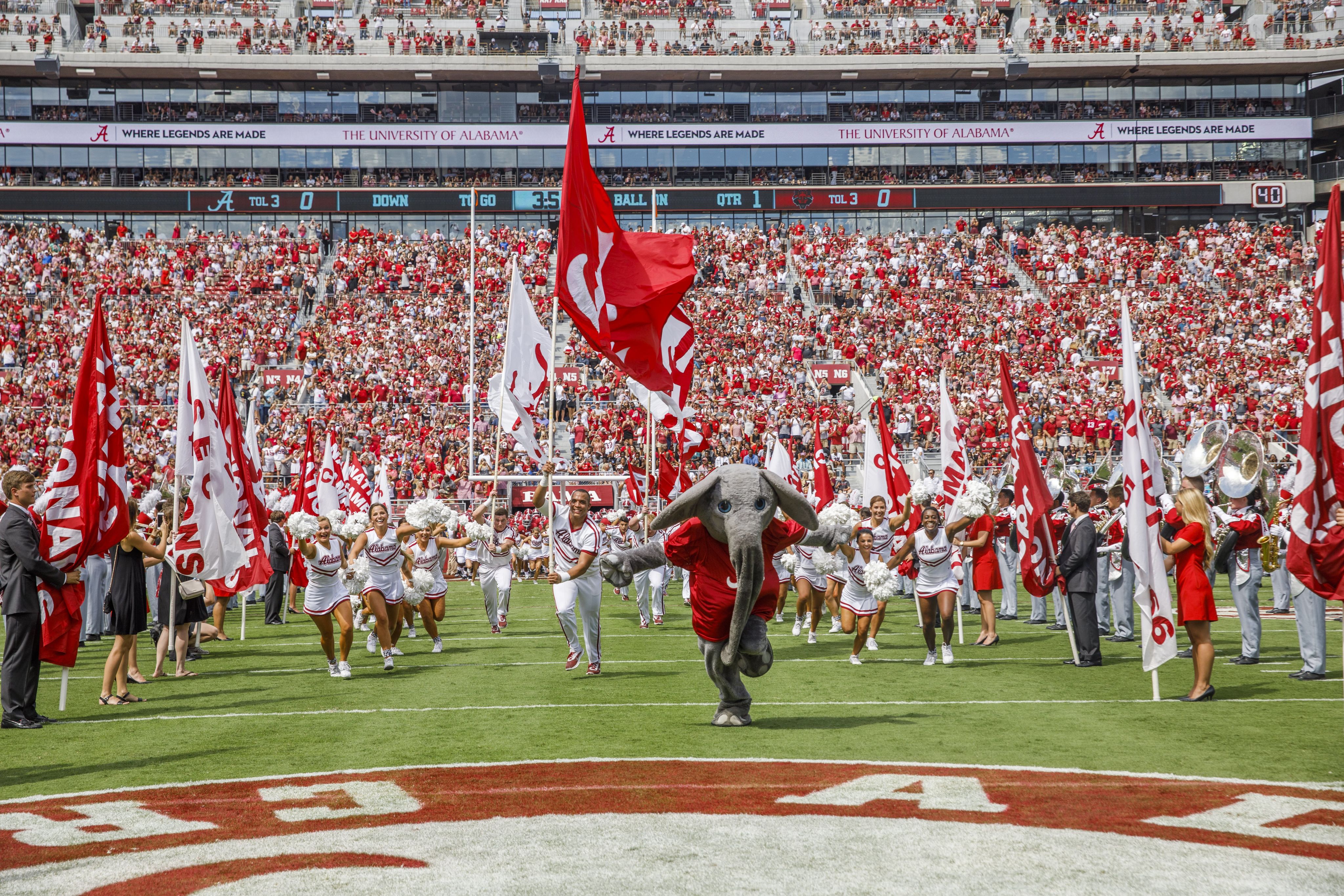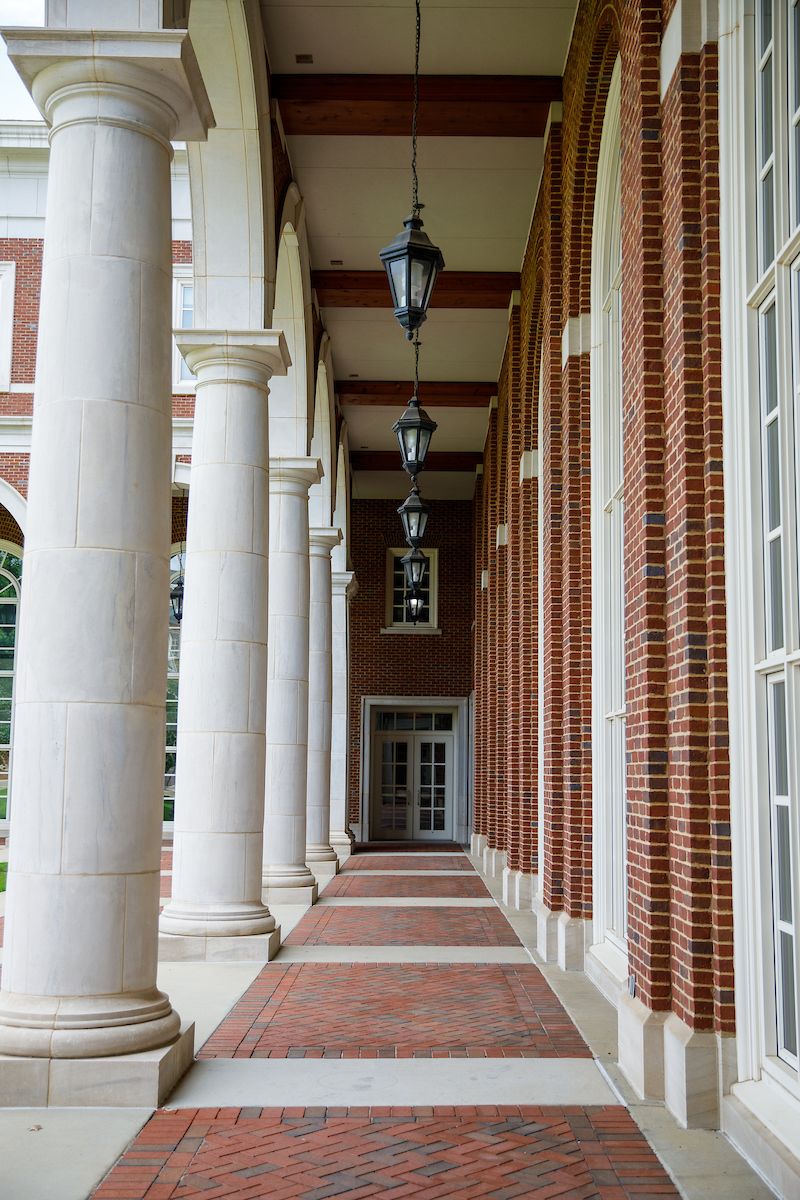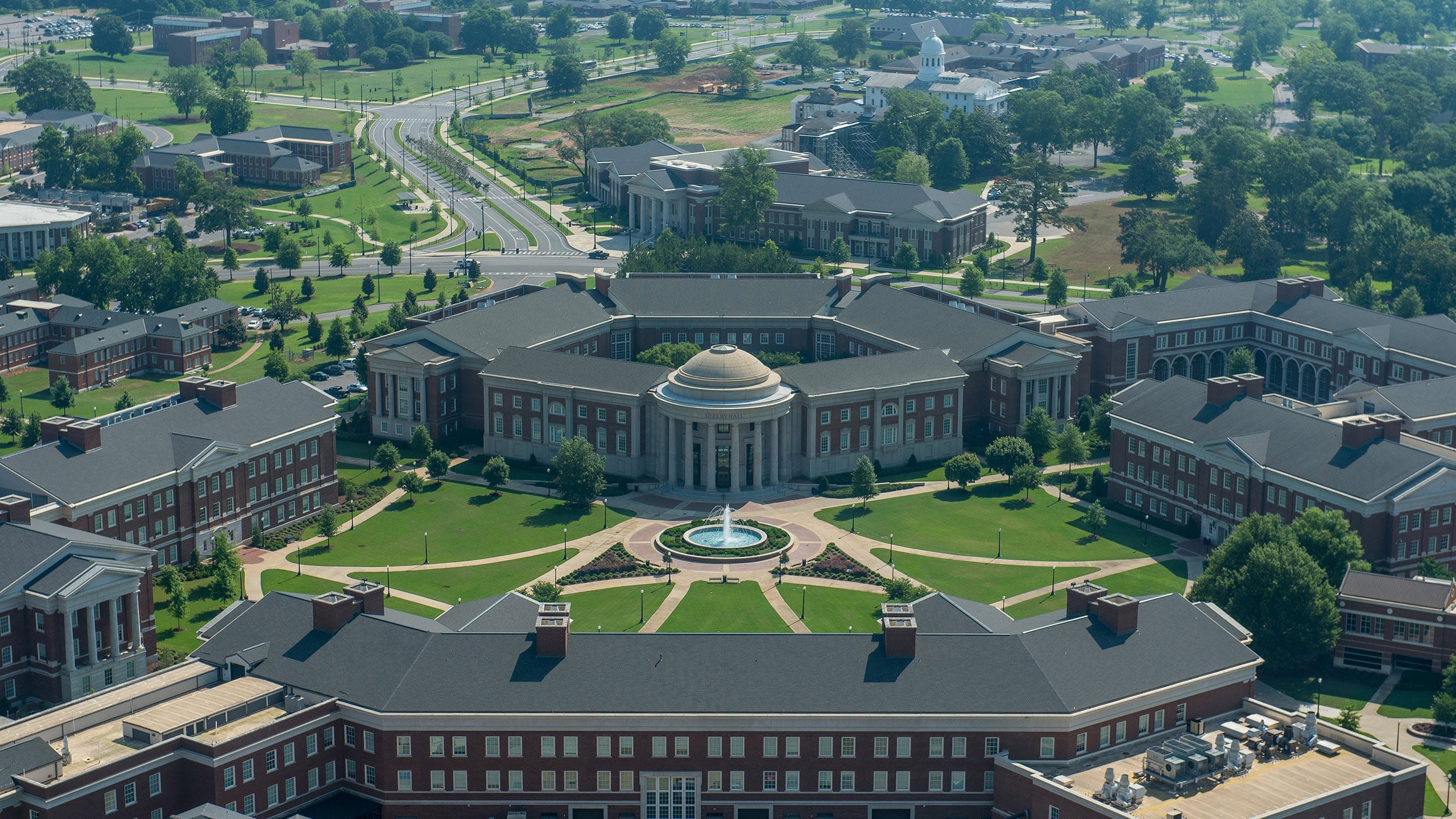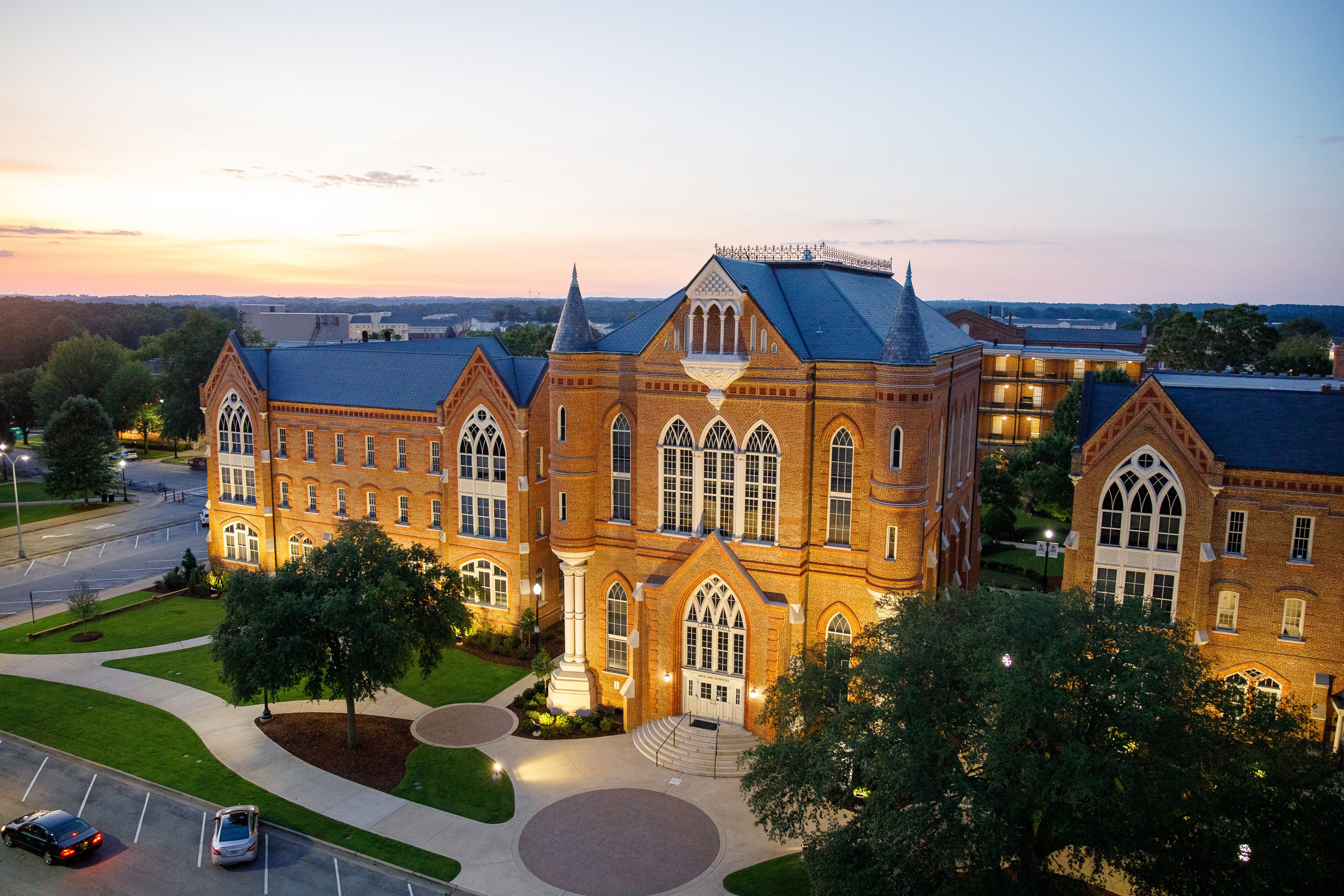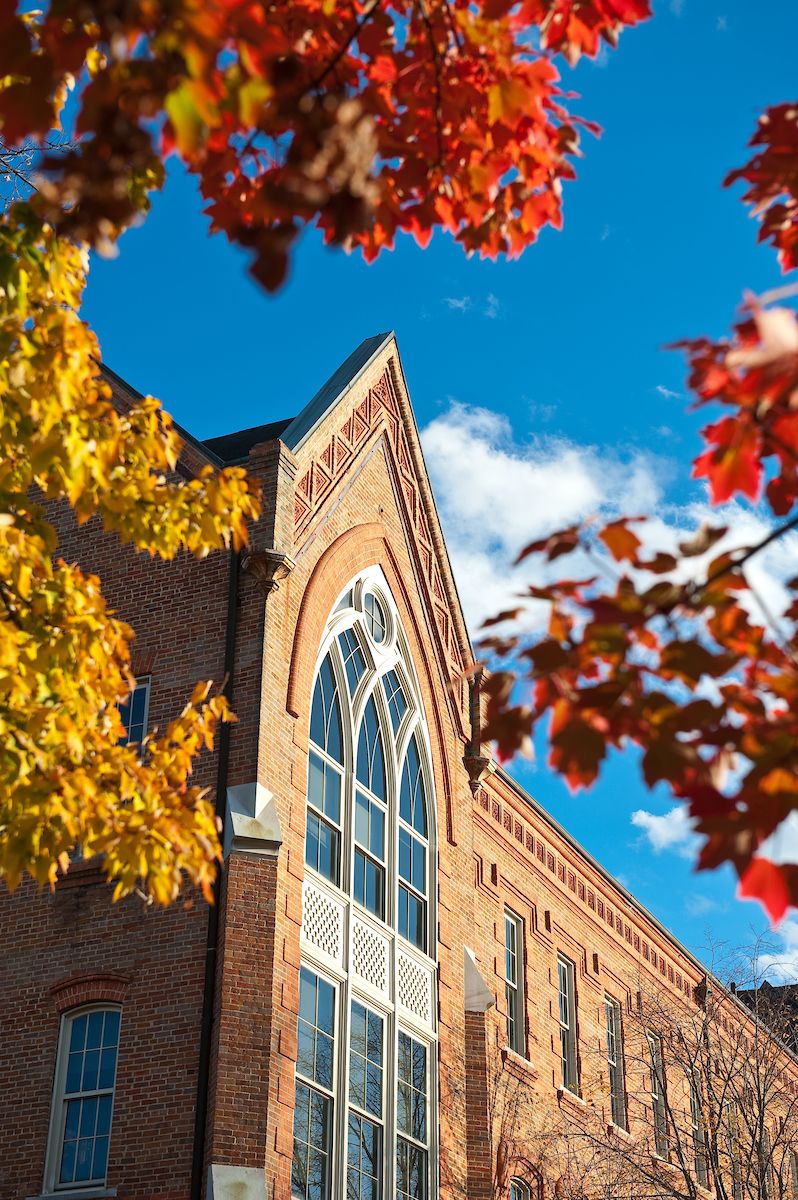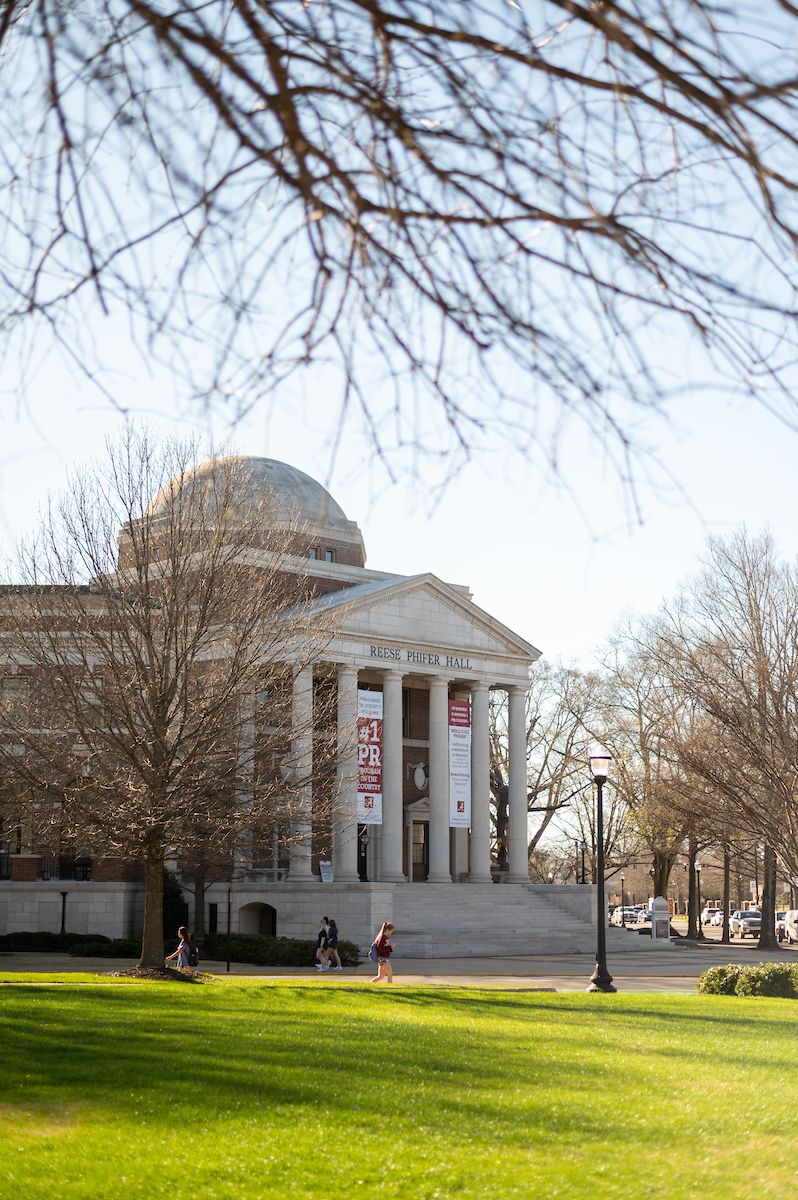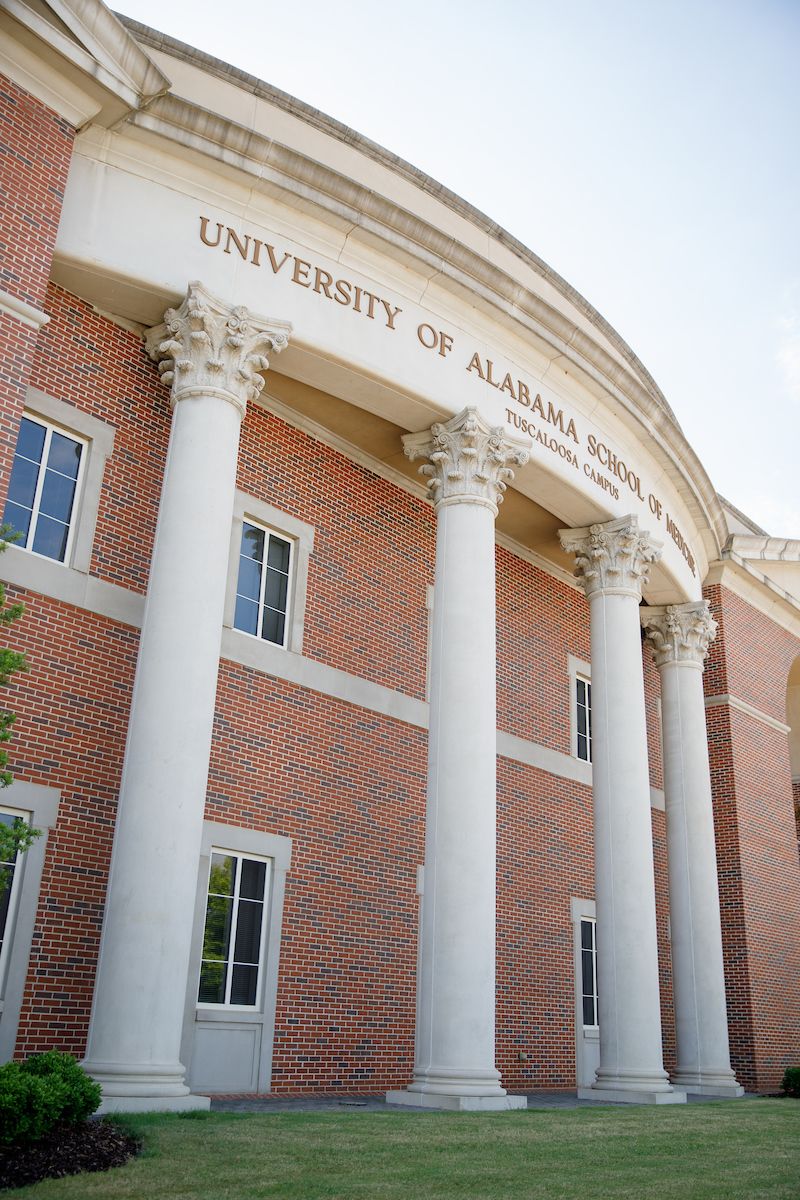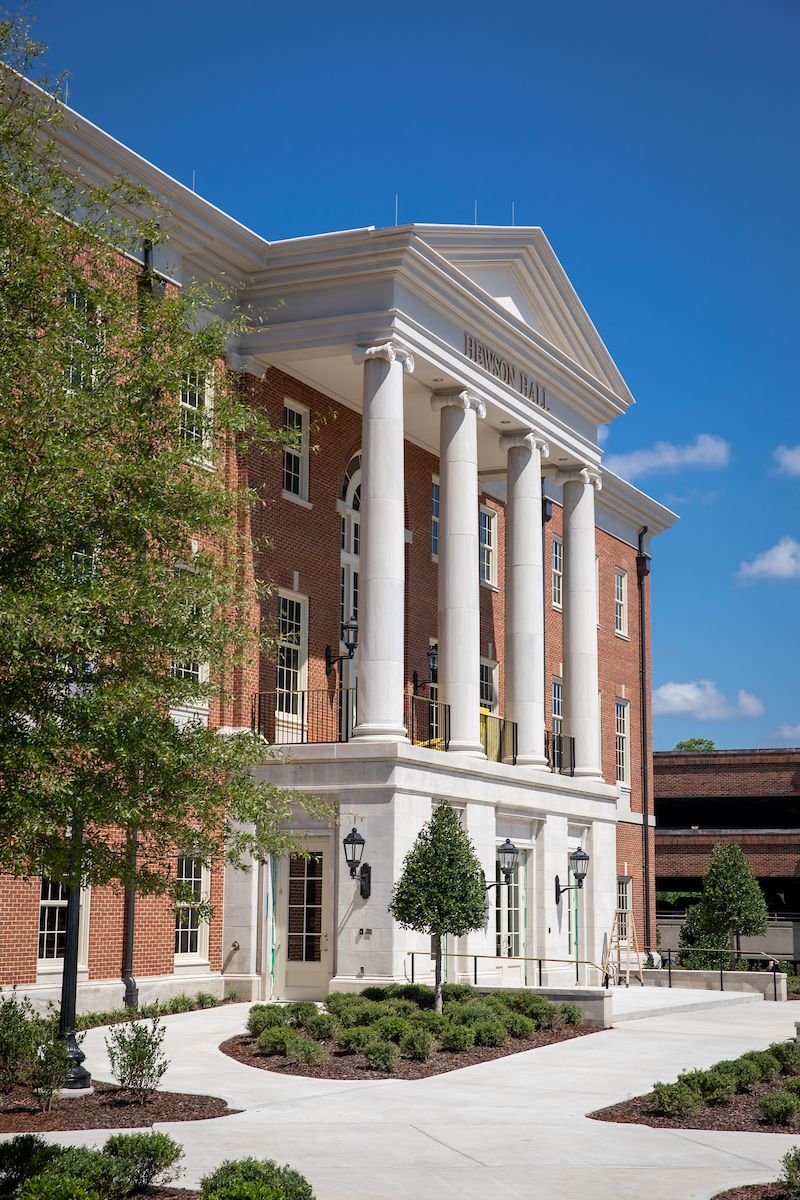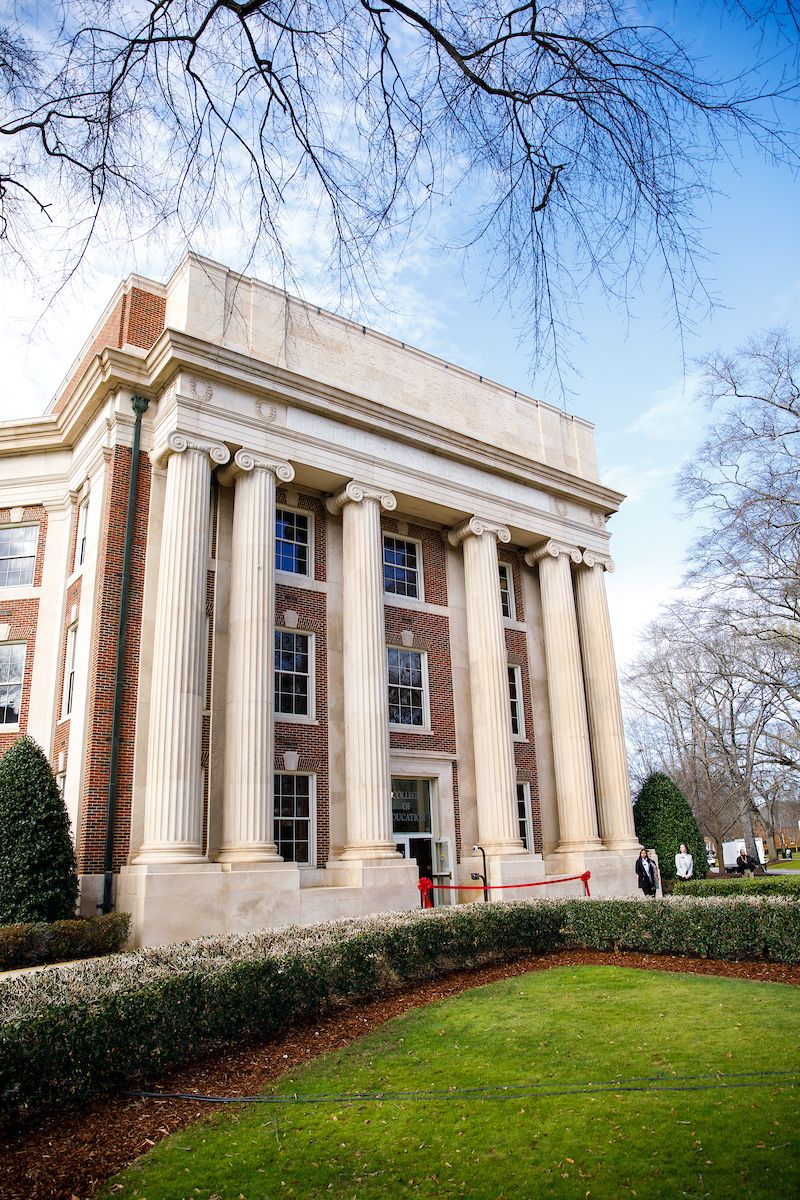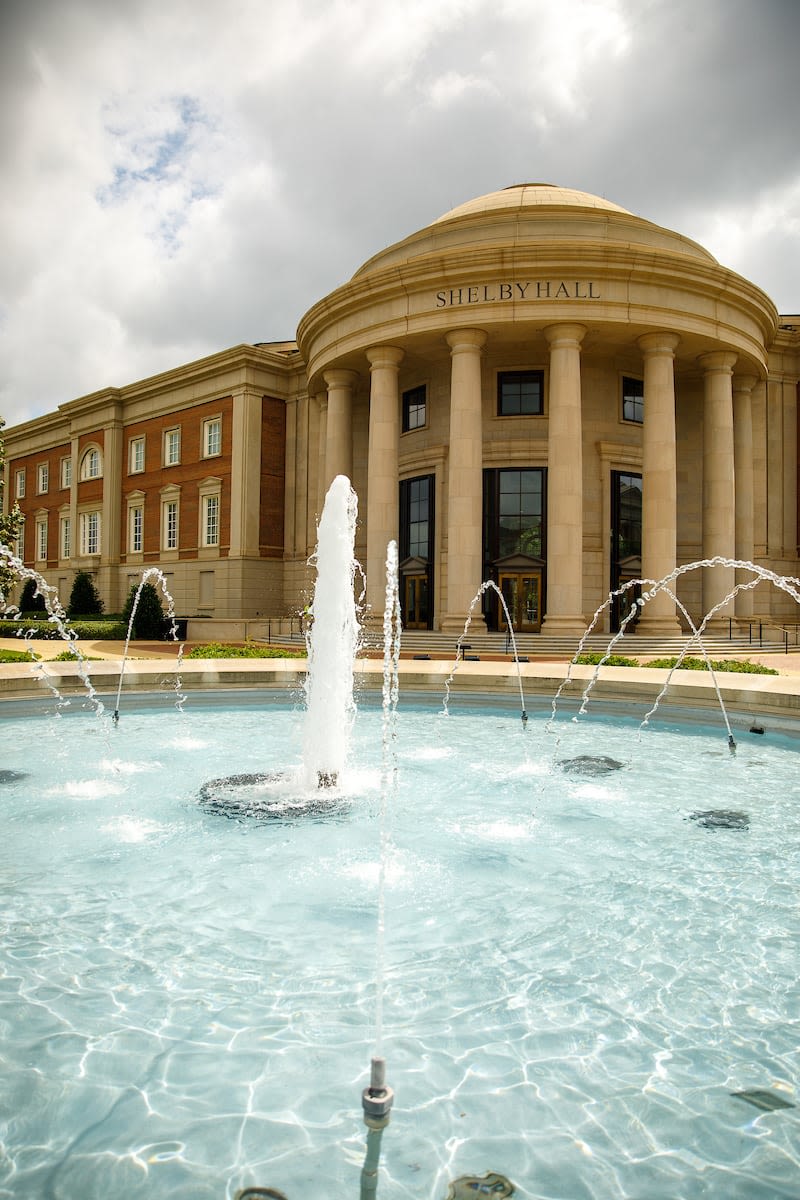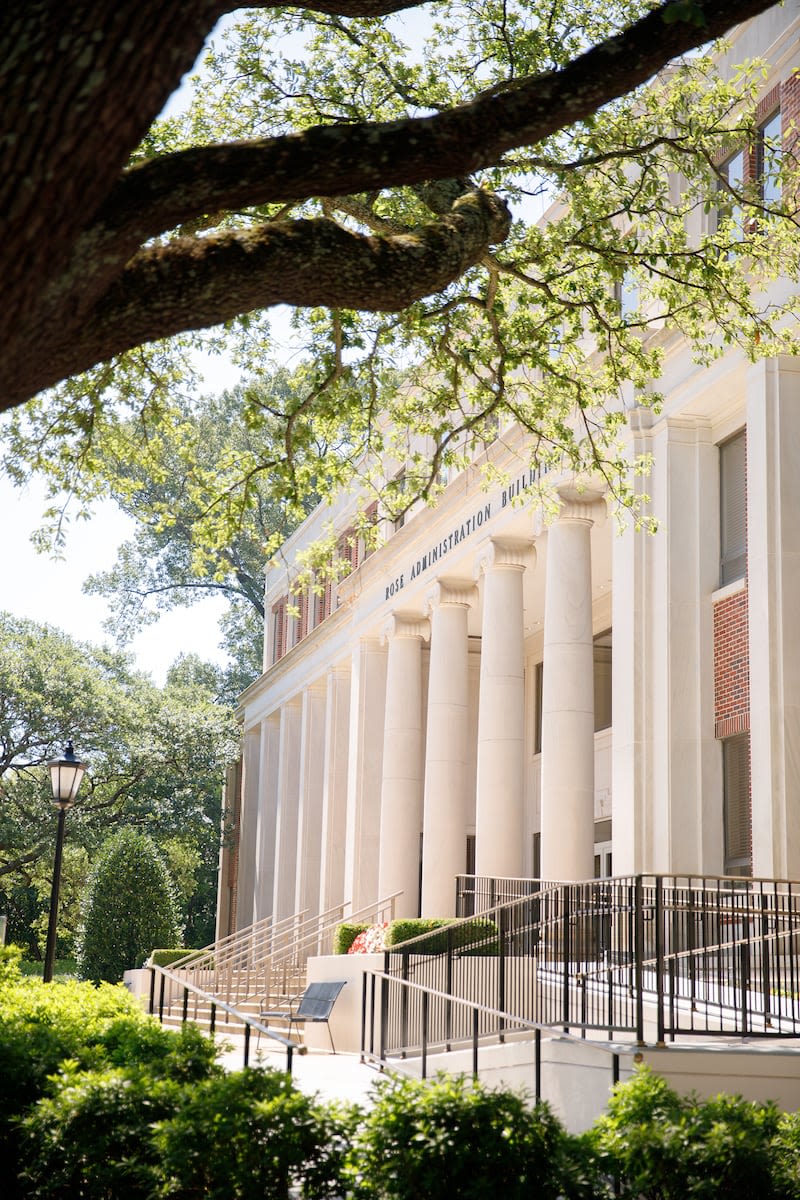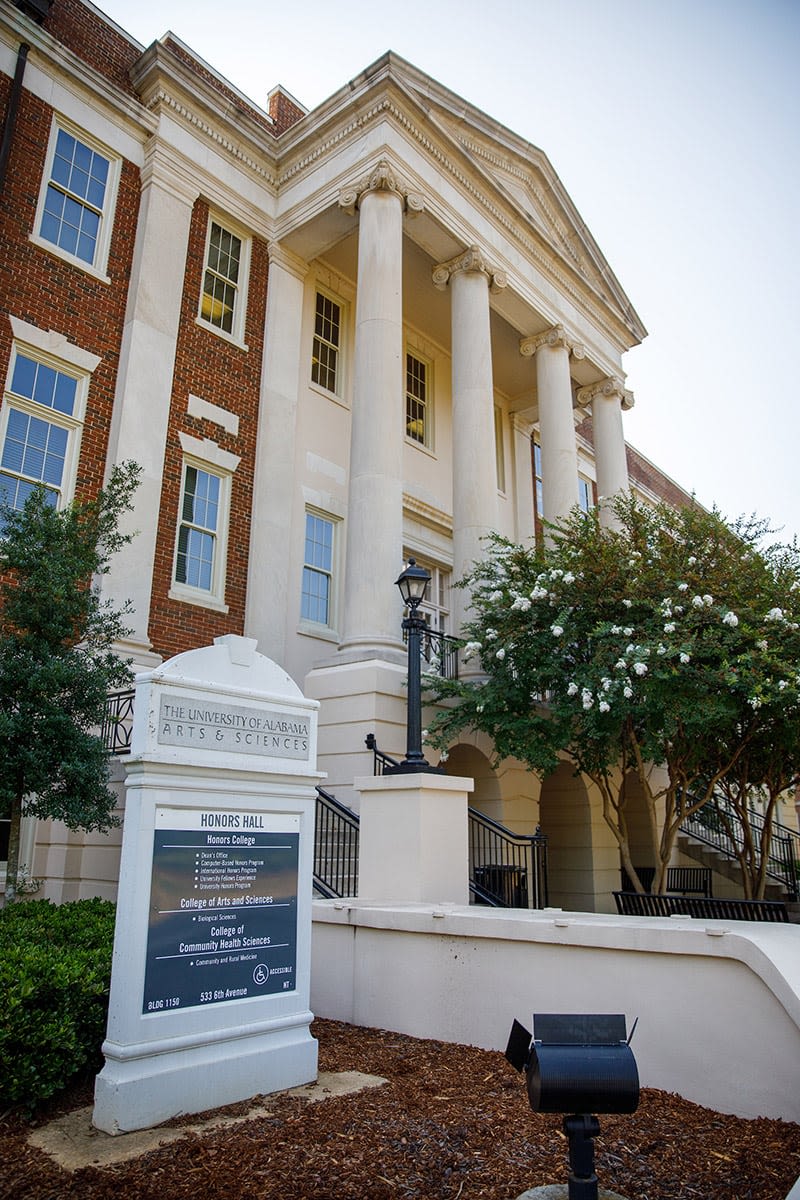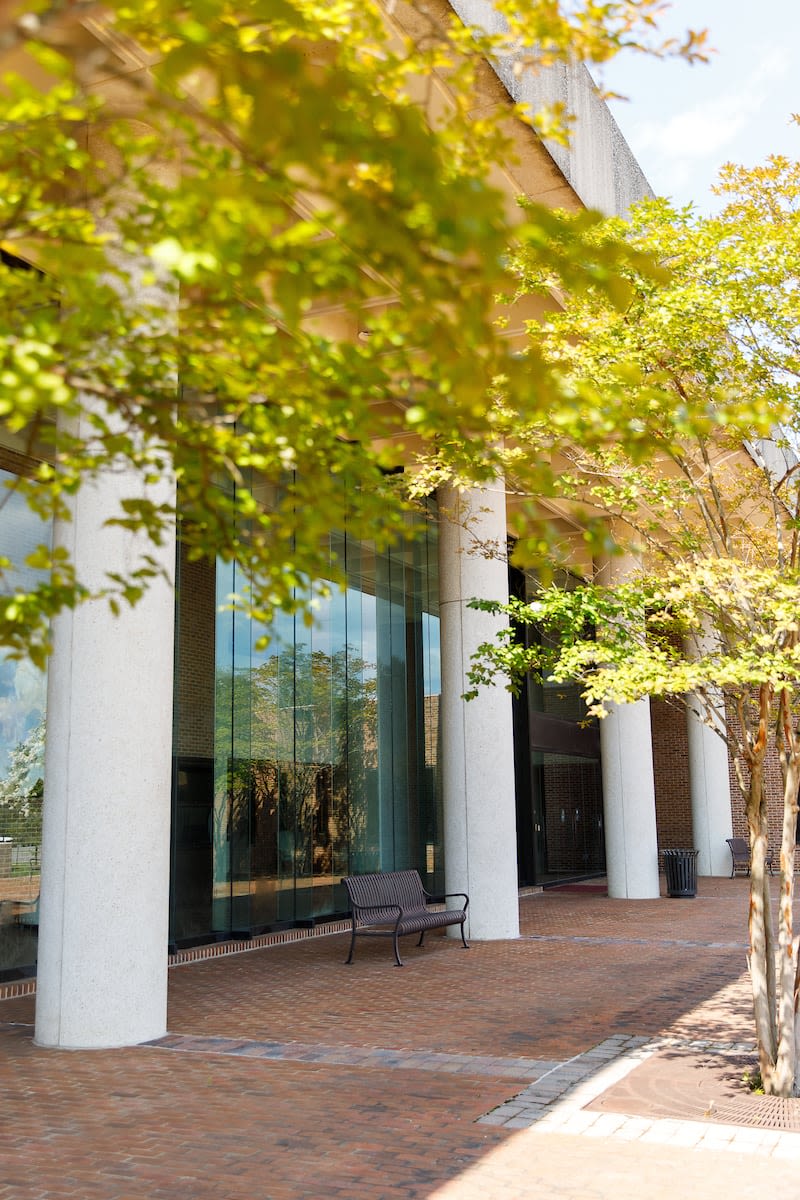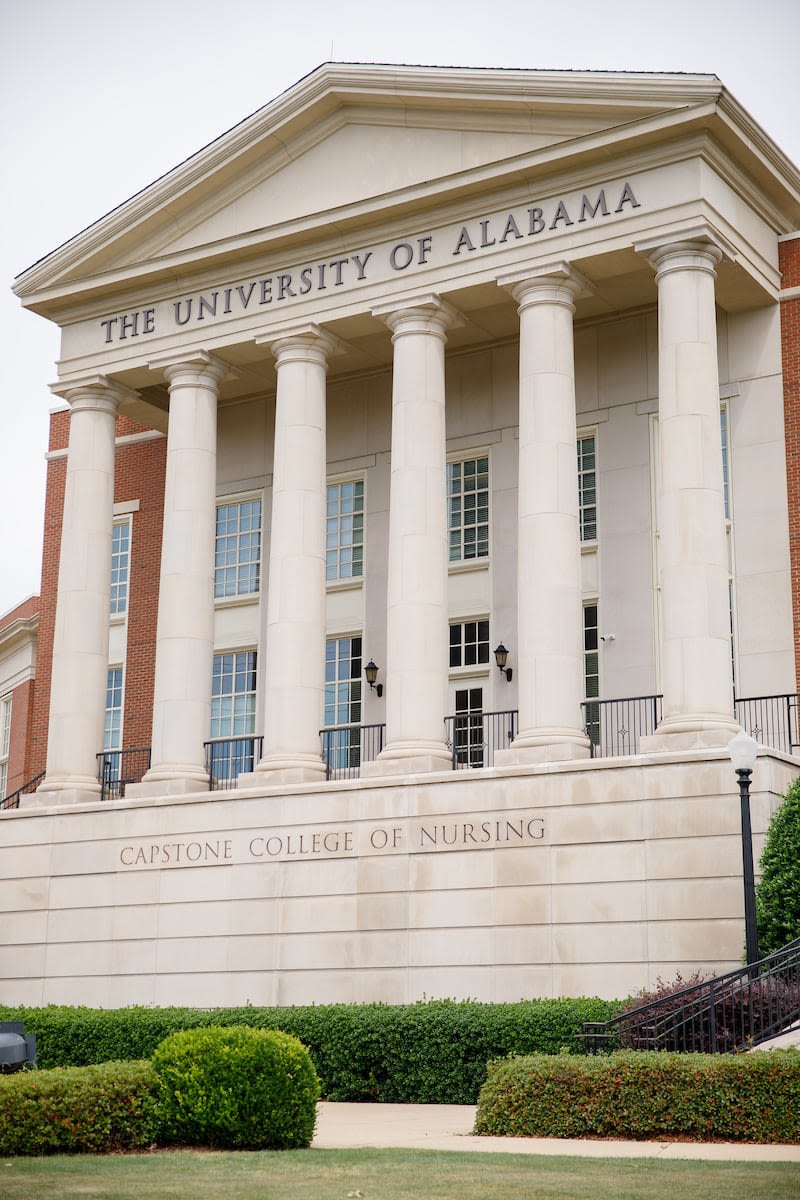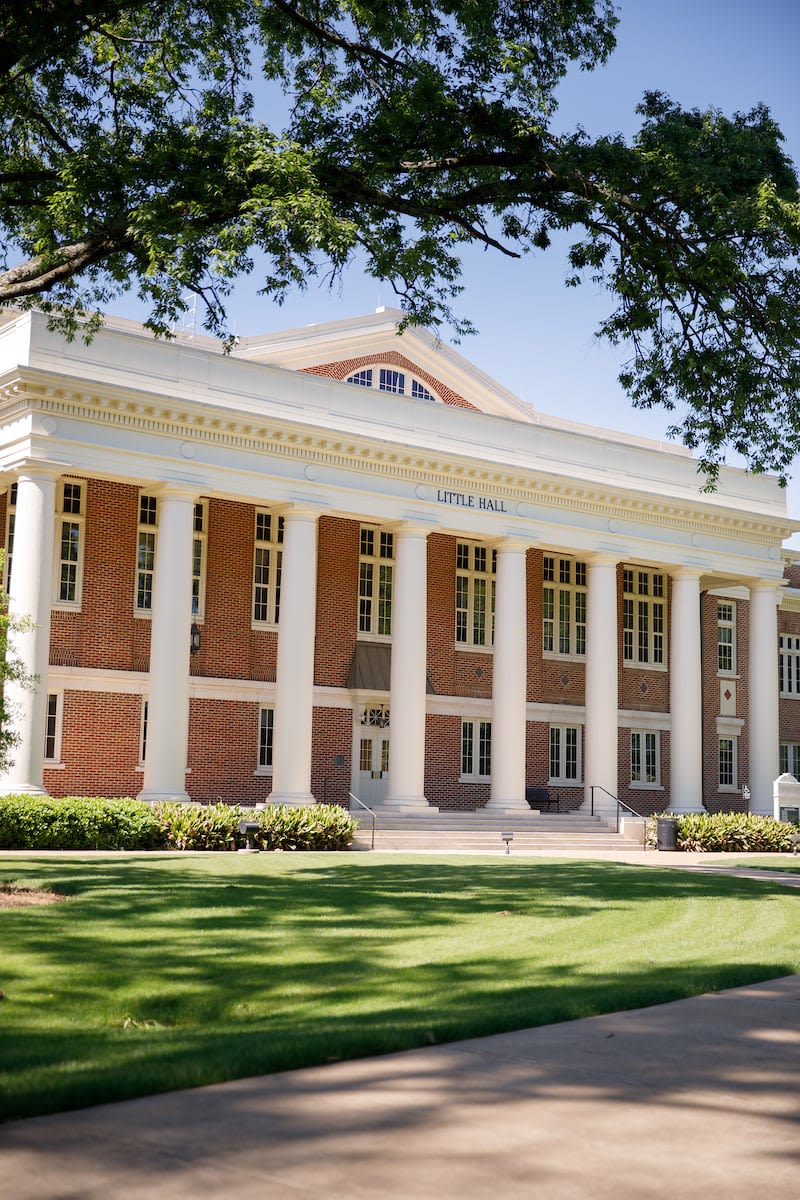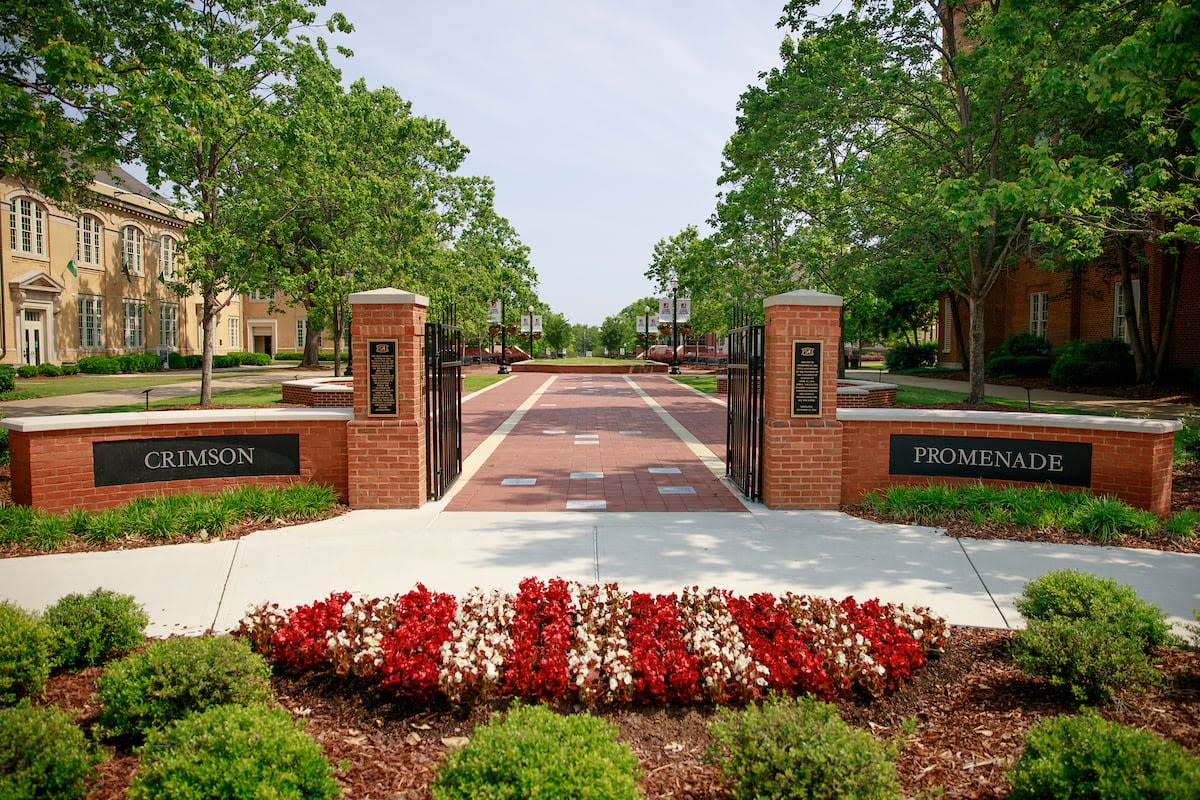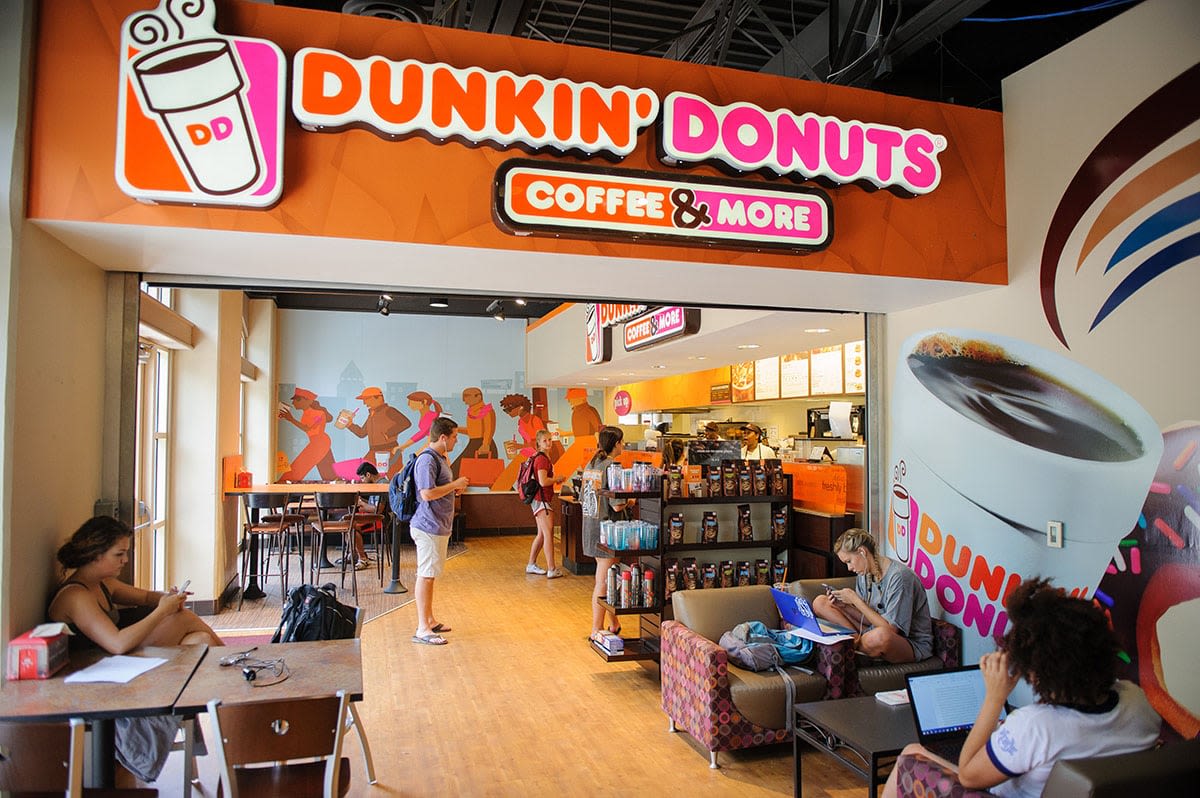Opportunity Profile
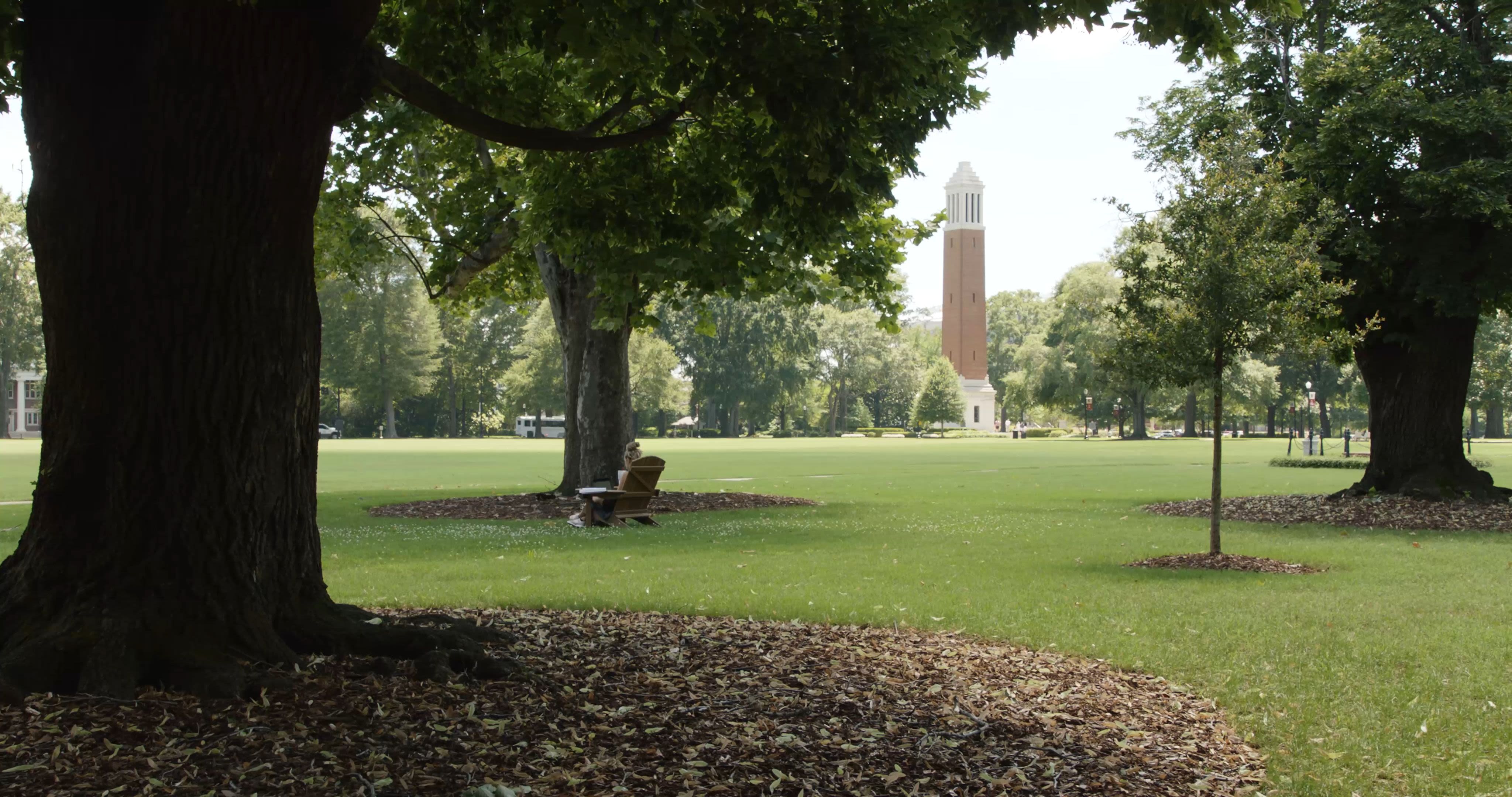
ABOUT THE UNIVERSITY OF ALABAMA
The University of Alabama, part of The University of Alabama System, is located in the city of Tuscaloosa and is one of the nation’s premier public universities, offering bachelor’s, master’s and doctoral degrees in more than 200 fields of study. UA’s more than 1,000 acres of tree-lined pathways and state-of-the-art facilities are a source of inspiration for students, faculty and staff. UA is among the nation’s fastest-growing flagship universities with more than 42,000 undergraduate, graduate and professional students. The Carnegie Foundation lists The University of Alabama as an R1 institution, placing it among the top doctoral research universities in the United States. UA employs more than 2,100 faculty and was recognized by Forbes magazine as one of America’s Best-In-State Employers and Best Employers for New Graduates. Faculty members work closely with students, and many involve students at the undergraduate, graduate and professional levels in basic and applied research.
The Crimson Tide holds 28 national championships, and UA intercollegiate athletics, intramural sports, club sports, adapted athletics and two student recreation centers ranked among the best in the nation give every student an opportunity to participate in the pride and tradition that define Alabama Athletics.
UA’s capital campaign – the Rising Tide 2.0 – has raised more than $1.8 billion to support strategic growth, including a $1.1 billion investment in the physical campus, adding more than 2.55 million gross square feet of space, over 150 new research-intensive faculty, signature research areas, and a growing number of partnerships with industry, state and federal agencies.
MISSION
The University of Alabama will advance the intellectual and social condition of the people of the state, the nation and the world through the creation, translation and dissemination of knowledge with an emphasis on quality programs in the areas of teaching, research and service.
VISION
The University of Alabama will be known as the university of choice for the best and brightest students in Alabama, and all students who seek exceptional educational opportunities. The University of Alabama will be a student-centered research university and an academic community united in its commitment to enhance the quality of life for all Alabamians and the citizens of the nation and world.
STRATEGIC GOALS
1. Provide a premier education that enhances the lives of our students, graduates and the communities they serve.
2. Increase the University’s productivity and innovation in research, scholarship and creative activities that impact economic and societal development.
3. Enrich our learning and work environment by attracting, welcoming and supporting all faculty, staff and students.
4. Foster an environment that will aid in the recruitment, retention, growth and support of outstanding faculty and staff.
THE UNIVERSITY OF ALABAMA SYSTEM
The University of Alabama System was established in 1969 and is the state’s largest higher education and healthcare enterprise. It includes three doctoral research institutions – The University of Alabama, The University of Alabama at Birmingham and The University of Alabama in Huntsville – and the UAB Health System. Committed to excellence in teaching, research and service, the UA System educates approximately 70,000 students, provides high-quality health care to millions, drives innovation in research, and improves lives across Alabama and beyond. As the state’s largest employer, the UA System generates an annual economic impact exceeding $18 billion and plays a critical role in advancing education and health care in Alabama.
UA System Chancellor Sid J. Trant is the principal liaison between the University of Alabama System Board of Trustees and the UA System’s component institutions. Working closely with the university presidents and health system CEO, he ensures the implementation of Board policies and supports each institution’s multifaceted mission.
The University of Alabama System Board of Trustees ensures the effective leadership, management and governance of the UA System. The Board is comprised of 15 elected members who represent Alabama’s Congressional districts on a volunteer basis, as well as the Governor of Alabama, who is an ex-officio member. Non-ex-officio members are elected by the Board, confirmed by the State Senate, and may serve up to three consecutive six-year terms.
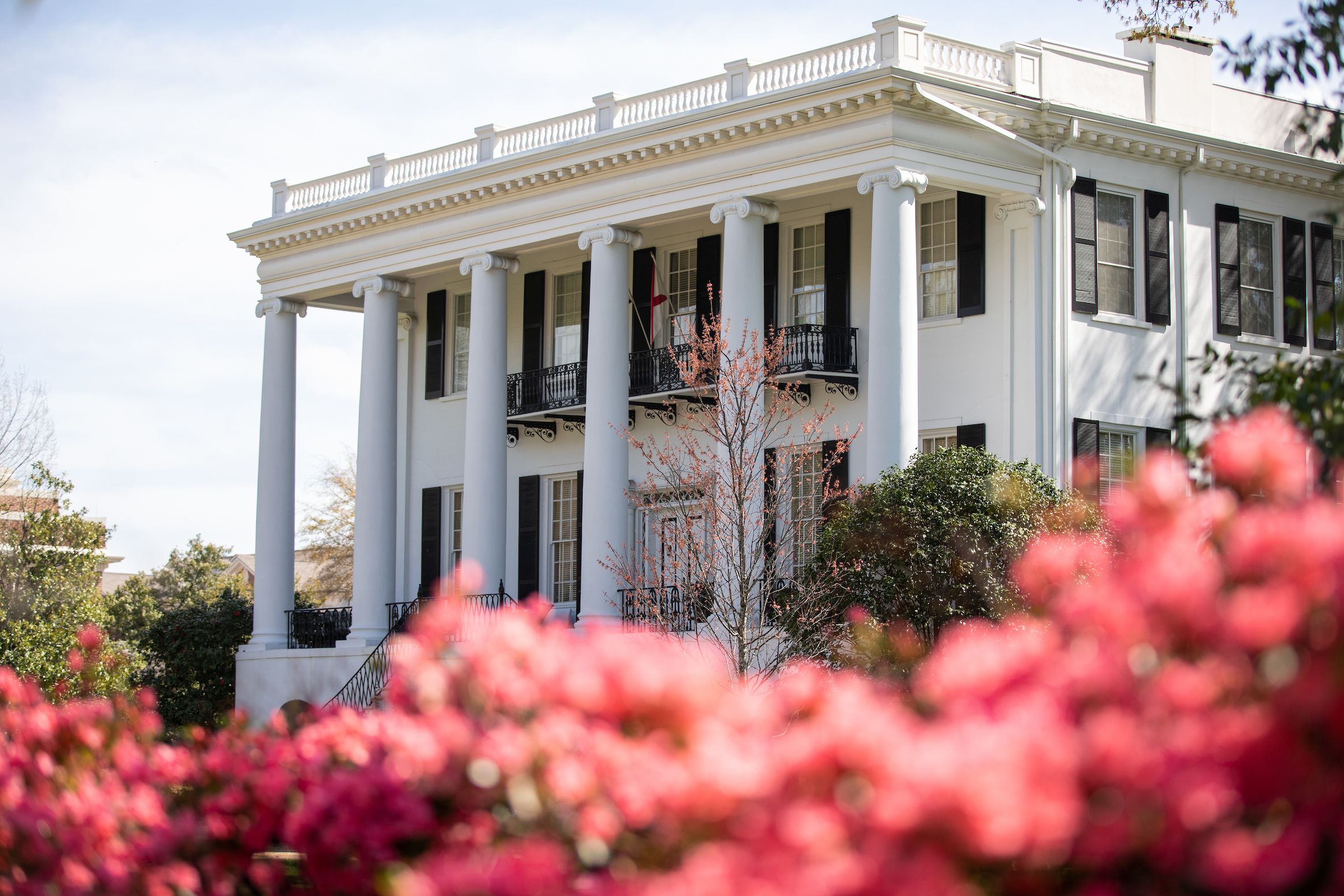
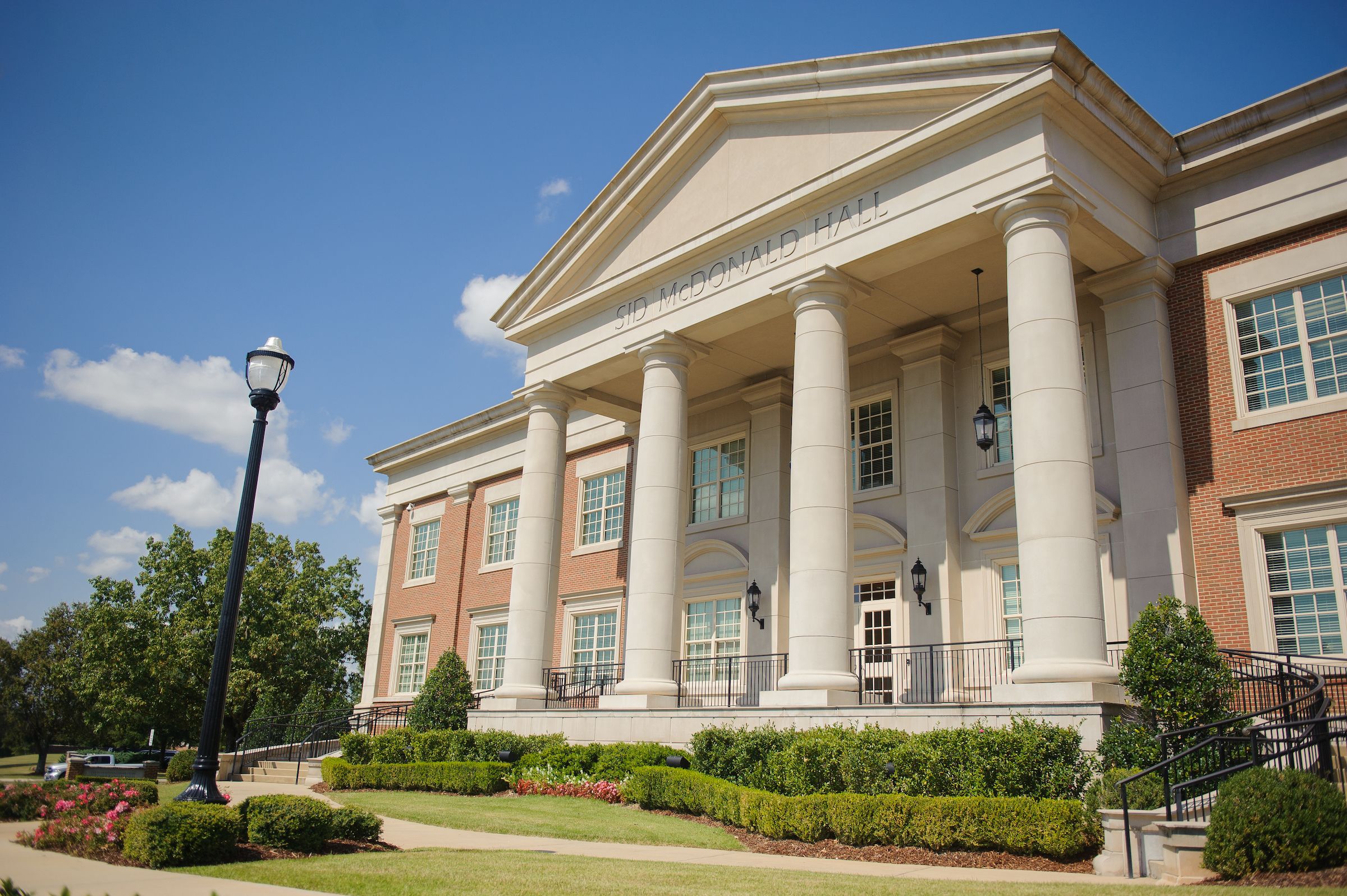
FALL ENROLLMENT HIGHLIGHTS
- Total enrollment: 42,360
- Undergraduate enrollment: 35,622
- Graduate enrollment: 6,279
- Professional enrollment: 459
COMMITMENT TO SUCCESS
The University of Alabama is steeped in tradition. Founded in 1831, it is the state’s oldest and largest public university. It carries a proud heritage, built on the foundations of academic excellence, student and faculty accomplishment, athletic achievement and alumni pride.
The University continues to be a national leader in higher education and is widely recognized for academic quality, student caliber, research achievements and athletic honors.
Throughout its progress, the University’s commitment to the state has remained steadfast. UA set a new enrollment record for fall 2025 welcoming 42,360 students, a 3.7% increase. The freshman class boasts a record 362 National Merit Scholars, a 37.1% increase, reinforcing the University’s status in the state and nation as a destination for high-achieving students from across the country. UA saw a more than 4% increase of in-state students, demonstrating UA’s role as the state’s flagship institution and a vital contributor to the state’s workforce. UA’s commitment to student success begins before students even step foot on campus, as demonstrated by a 30.8% rise in in-state Early College enrollment. UA enrollment in the Graduate School surpassed 6,200, another new record. With students from every Alabama county, all 50 states, the District of Columbia and 99 countries, UA is educating and graduating more students than any college in the state, awarding more than 9,500 degrees over the past year.
The Capstone remains firmly committed to educating and graduating students from around the world, but especially from the state of Alabama; as the state’s flagship university, it is a vital part of the University’s mission. To underscore that commitment to students residing in Alabama, the University is offering more competitive scholarships for in-state students. During the 2024-2025 degree year, UA graduated a total of 9,507 students. With more than 100 active alumni chapters and close to 130,000 alumni living in state boundaries, UA has a large footprint at home while continuing to welcome students from across the nation and around the globe.


POINTS OF PRIDE
UA was recognized as a Top Producing Institution of Fulbright U.S. Students for the eighth time in 10 years.
The Capstone College of Nursing boasts a 100% National Council Licensure Examination pass rate among its 2024 graduates, as reported by the Alabama Board of Nursing.
UA senior Addison Miller is among 43 Americans selected to study in the United Kingdom through the prestigious Marshall Scholarship. Miller is the fourth UA student to earn a Marshall Scholarship since 2020, making UA a top producer of Marshall Scholarship recipients among public universities and leader among Southeastern Conference universities over the past five years.
UA was named a “Tree Campus USA” for the 10th consecutive year by the Arbor Day Foundation.
UA is the headquarters of a tri-state initiative that will create a premier research and development hub for research-enabled mobility innovation that drives economic and workforce development.
UA is among eight universities in the nation and the only flagship public university to receive an A rating on the Anti-Defamation League’s 2025 Campus Antisemitism Report Card.
The Barry Goldwater Scholarship and Excellence in Education Foundation selected UA students Ian Brunetz, Emily Gokie, Gabrielle Kowkabany and Blake Yuenger as Goldwater Scholars for 2025-2026.
Dr. M.N.V. Ravi Kumar was selected for the Fulbright-Nehru Scholar Award that will allow him to conduct vital research at the National Institute of Nutrition in Hyderabad, India.
The Inclusive Higher Education Accreditation Council awarded full accreditation to the CrossingPoints Tier 3 Program, making it the first accredited program of its kind in the Southeastern Conference and the state of Alabama.
Aidan Meyers, a student in the department of biology and a Blount Scholar, received a Summer Student Fellowship from the Parkinson’s Foundation to support research on a gene that appears to be related to Parkinson’s Disease. Meyers was one of only 12 students worldwide, including medical students, to receive the grant.
Dr. James Harris and Dr. Igor Fedin received the National Science Foundation’s CAREER Award which recognizes scientists and engineers who show leadership at the intersection of education and research early in their careers.
UA junior Camila Lopez was one of 100 in the nation awarded the Obama Foundation’s Voyager Scholarship that recognizes college students with a passion for public service.
UA is among the National Academy of Inventor’s Top 100 U.S. Universities Granted U.S. Utility Patents.
UA students Aparna Bhooshanan, Hari Gunda and Madeleine Luther received Boren Scholarships for the study of languages in world regions critical to U.S. interests and underrepresented in study abroad.
In a study funded by the National Science Foundation, UA researchers developed a new model designed to help these communities develop more effective wildfire evacuation plans.
UA made Forbes’ lists of America's Best Employers By State, America's Best Employers for Women and Best Employers for New Grads, as well as America's Top Colleges 2026.
UA's chapter of Tikkun Olam Makers, a student organization dedicated to engineering low-cost, open-source assistive devices, was the only U.S. university to win a grand prize at the TOM Global Innovation Challenge — and one of only two U.S. schools to earn multiple awards.
Dr. Tricia McElroy, associate professor in the department of English, is the new executive director of the nation’s largest and most prominent professional organization devoted to the study of Shakespeare. With her appointment, the Shakespeare Association of America will move its headquarters to UA.
ACCREDITATION
The University of Alabama has earned reaffirmation of its accreditation by the Southern Association of Colleges and Schools Commission on Colleges (SACSCOC). SACSCOC made the announcement at its annual meeting in Houston, Texas, on Dec. 8, 2015. The University’s accreditation will run through 2025.
Reaffirmation is the culmination of a process designed to verify that the University adheres to standards of quality as judged by its peers. It involved a significant self-study by the University and the development of a Quality Enhancement Plan (QEP) to improve student learning and the environments that support student learning. Peer evaluators conducted an on-site visit in March 2015 to review the QEP, which was accepted without recommendations. UA was first accredited in 1897.
UA has a sound financial base and demonstrated financial stability to support the mission of the institution and the scope of its programs and services.
The University has provided strong, compelling evidence to confirm that the institution has adequate physical resources to support its mission and current programs as well as comprehensive plans to continue to do so in the future.
ACADEMIC OFFERINGS
UA offers bachelor’s, master’s and doctoral degrees in more than 200 degree programs, with a student/faculty ratio that averages 19-to-1 with more than 42% of classes having 19 or fewer students.
- 85 undergraduate degree programs through 12 colleges and schools
- 150+ master’s, educational specialist and doctoral degree programs
- Online learning courses featuring technology-enabled instruction, video streaming and blended formats
- More than a thousand global learning opportunities in over 250 locations in more than 55 countries through the University’s 60 faculty-led study-abroad, 27 exchange and numerous affiliate programs
- An impressive student-to-faculty ratio of 7-to-1 in the University of Alabama School of Law with a curriculum that is traditional but includes offerings in emerging areas of the law
NATIONALLY RANKED PROGRAMS
UA appeared on 14 U.S. News & World Report lists ranking the Best Online Programs, including five programs ranked in the top 10 of their respective lists.
UA was listed among the Best Online Masters of Public Health for 2025 by The Princeton Review.
The UA Culverhouse College of Business is ranked No. 31 among public universities on U.S. News & World Report’s list of Best Undergraduate Business Programs.
The UA Manderson Graduate School MBA Program is ranked No. 27 among public universities on the list of best business graduate schools by U.S. News & World Report.
The UA School of Social Work master's program ranks No. 17 among public universities on U.S. News & World Report's list of Best Schools for Social Work as part of its Best Graduate Schools rankings.
UA is listed among Fortune magazine’s Best MBA Programs for 2025.
The library and information studies program ranks No. 21 on U.S. News & World Report’s list of the Best Library and Information Studies Programs.
U.S. News & World Report ranked the School of Law No. 12 among public universities on its list of Best Law Schools. The law school also ranked No. 5 among public universities for Law Schools with the Most Graduates in Federal Clerkships.
The UA Capstone College of Nursing ranks No. 22 on U.S. News & World Report’s list of Best Bachelor of Science in Nursing Programs.
TIME magazine listed UA as one of its Best Colleges for Future Leaders 2025.
PRWeek listed the College of Communication and Information Sciences' public relations program among the top five in the nation for the 11th time.
2025 FRESHMAN CLASS
The freshman class boasts a record 362 National Merit Scholars, a 37.1% increase, reinforcing the University’s status in the state and nation as a destination for high-achieving students from across the country.
STUDENT SUCCESS
- UA’s McCollough Institute for Pre-Medical Scholars once again achieved 100% medical school acceptance in 2025.
- UA Miracle raised $223,725 over the past year for the Children’s Miracle Network Hospital at Children’s of Alabama.
- Beat Auburn Beat Hunger raised a record 630,624 pounds of food during its annual food drive.
- The Million Dollar Band was selected to perform at the 100th Macy’s Thanksgiving Day Parade in 2026.
- Four UA students were selected for Critical Language Scholarships from the U.S. State Department to study overseas during the summer of 2025.
- The Fulbright Program selected 15 UA students for various awards for the 2025-2026 academic year.
STUDENT COMMUNITY
With more than 650 political, social, religious, intramural sports and service groups, the University is home to a vibrant student population. UA has one of the largest fraternity and sorority communities in the nation with regard to overall fraternity and sorority membership. UA’s Panhellenic Association won a 2023-24 National Panhellenic Conference College Panhellenic Excellence Award.
SUPPORTIVE ALUMNI FAMILY
Through earnings generated from investment of endowments combined with its operating budget and other available funds, the National Alumni Association was responsible for awarding $5 million in scholarship assistance to nearly 3,000 students for the 2024-2025 academic year.
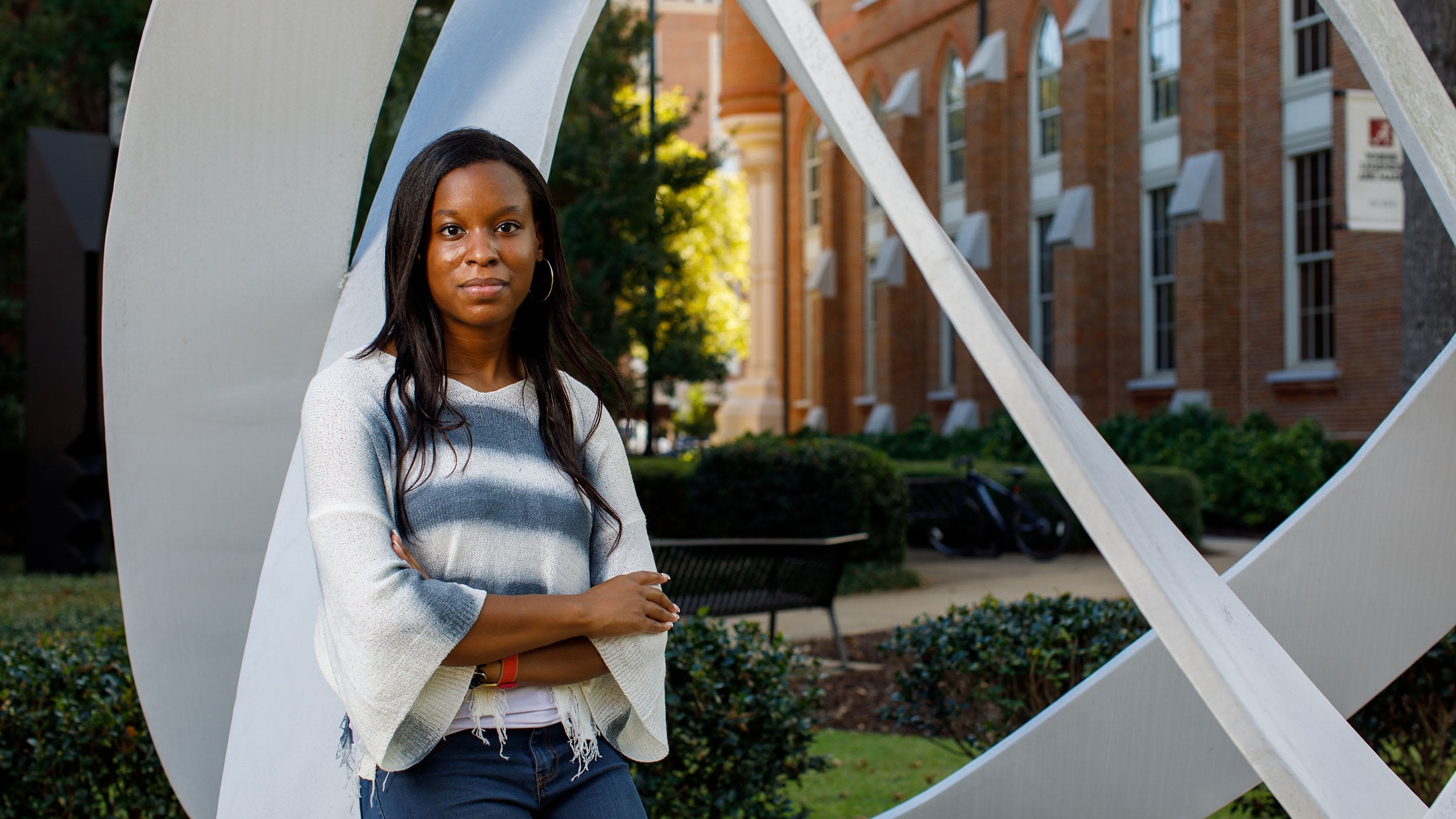
RESEARCH
The University of Alabama research enterprise is making a real difference in the lives of the people it serves. UA’s world-class faculty, professional staff and students are leading the way to develop new technologies, advance scientific discovery and harness the power of creative thought. This is evident by 10 years of continuous growth in fiscal year 2024, with new research awards growing by nearly 21% compared to the previous fiscal year. In total, the University received $269.9 million in sponsored awards, marking an all-time high in external funding.
ECONOMIC DEVELOPMENT
As the state’s flagship academic institution, economic development is an important responsibility of The University of Alabama. The University seeks to prepare a job-ready workforce, extend programs to serve rural and urban communities, forge research partnerships, transfer technologies, foster innovation and scholarship, build small businesses, support industry and create jobs. According to the latest economic impact report, UA set new records generating economic and fiscal impacts of $3.4 billion and providing 15,238 jobs in academic year 2023-2024.
ATHLETICS
Intercollegiate athletics, intramural sports, club sports, adapted athletics and two student recreation centers ranked among the best in the nation give every student an opportunity to participate in the pride and tradition that define Alabama Athletics.
UA matched its all-time high in overall Graduation Success Rate (GSR) of 96 percent, a record that was set last year. With that, Alabama is tied for tops among all Southeastern Conference universities and is seventh-best among NCAA Power Five public institutions.
In his first season as head football coach, Kalen DeBoer tied the program record for most wins by a first-year coach.
The men's basketball team reached the NCAA Elite Eight in back-to-back seasons for the first time in program history.
Seventeen current and former student-athletes competed in the 2024 Paris Olympics.
A total of seven programs scored a perfect 1,000 in the latest Academic Progress Rate (APR). The Crimson Tide boasts 10 teams that led their respective sport in the SEC in APR numbers with 12 UA squads setting or tying all-time program-high marks for the four-year average.
Football's mark of 998 was not only the best in the SEC and second nationally, but also set a program record for APR.
The gymnastics team won the NCAA Tuscaloosa Regional and to advance to the NCAA Championships Semifinals.
Distance runner Doris Lemngole swept SEC Scholar-Athlete of the Year honors in cross country, indoor track and field and outdoor track and field. She also won the Honda Sport Award for Cross Country.
The softball team hosted an NCAA Regional for the 20th consecutive year.
The baseball team won at least 40 regular season games for the first time since 2002.
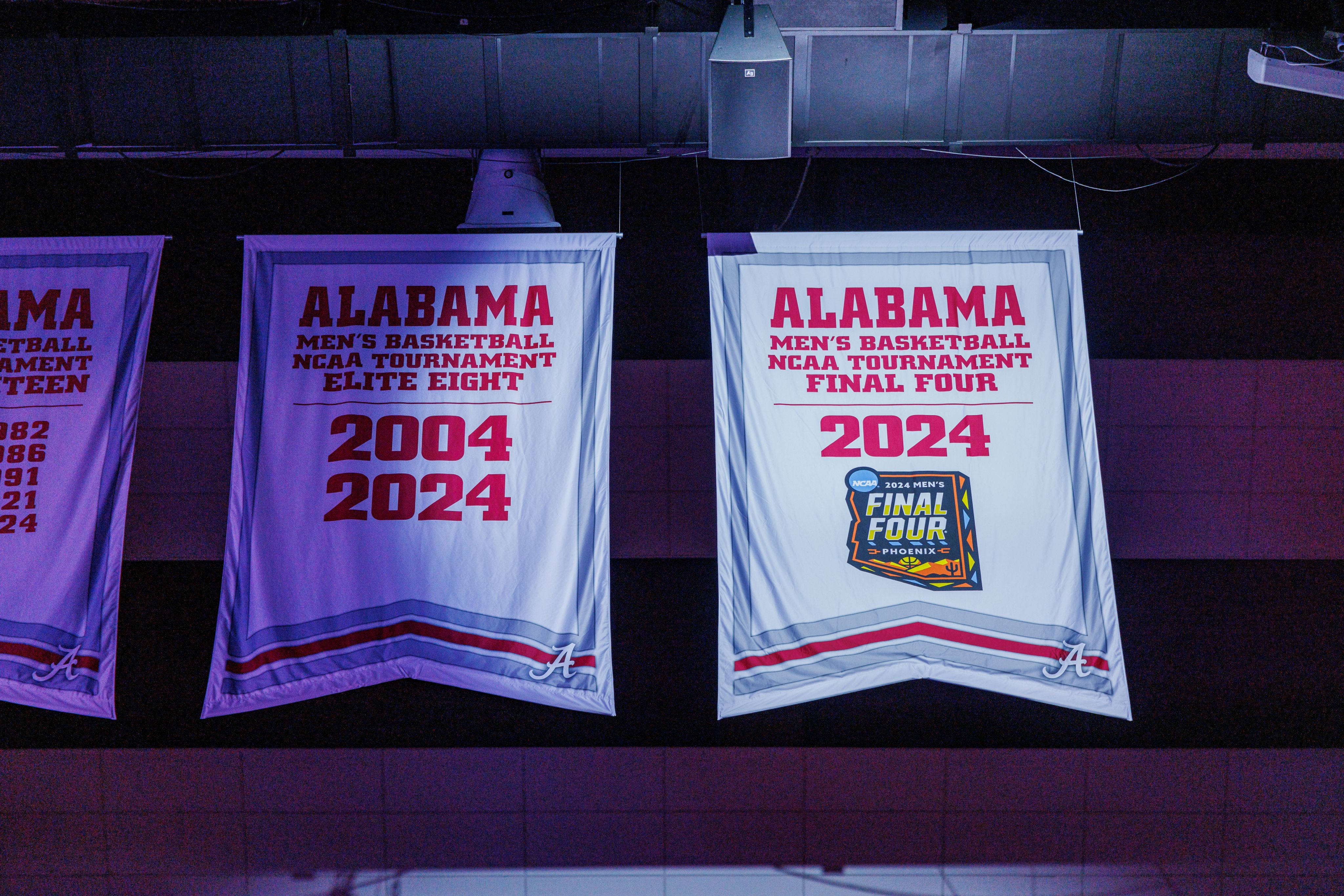
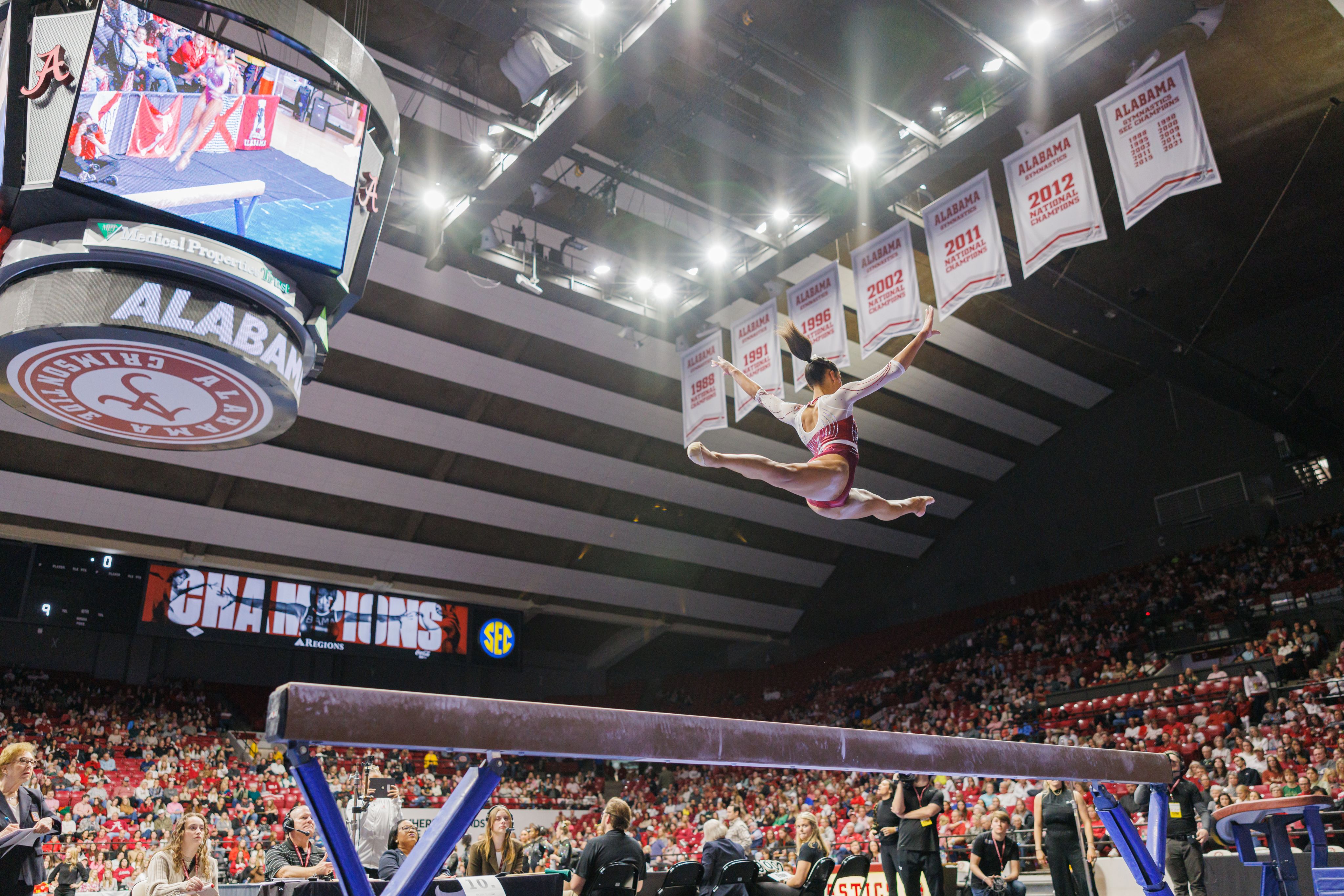

COLLEGES AND SCHOOLS
J. FRANK BAREFIELD JR. COLLEGE OF ARTS AND SCIENCES
The J. Frank Barefield Jr. College of Arts and Sciences is one of the oldest and largest liberal arts colleges in Alabama, and among the finest in the region. It is nationally recognized for the number of undergraduate and graduate students who receive national awards and scholarships, including Fulbright and Goldwater scholars. The College’s 80+ majors, minors, concentrations and pre-professional tracks include several unique to the state of Alabama.
COLLEGE OF COMMUNICATION AND INFORMATION SCIENCES
The University of Alabama’s College of Communication and Information Sciences is a comprehensive, multidisciplinary college in which teaching, research and service are focused on shared creation, presentation, dissemination, retrieval, collection, analysis and evaluation of messages and meanings in a variety of settings. The mission is supported by one of the country’s most diverse combinations of academic and service programs. The College is made up of four academic departments offering five undergraduate degree programs, five master’s degree programs and one interdisciplinary doctoral program. The C&IS public relations program is consistently ranked among the top five in the nation.
COLLEGE OF COMMUNITY HEALTH SCIENCES
The UA College of Community Health Sciences is home to one of the nation’s largest family medicine residencies – The University of Alabama Tuscaloosa Family Medicine Residency Program – and offers post-graduate fellowships in behavioral health, emergency medicine, geriatrics, hospital medicine, obstetrics, pediatrics and sports medicine. In its role as a regional campus of The University of Alabama at Birmingham Marnix E. Heersink School of Medicine, the College provides the third and fourth years of clinical education and training to a portion of medical students. Through a series of nationally recognized pipeline programs, the College recruits and mentors students from rural Alabama who wish to return to their hometowns or similar areas to practice.
The College operates University Medical Center, with five locations that together comprise the largest community medical practice in West Alabama as well as the UA Student Health Center and Pharmacy and Capstone Hospitalist Group. The College also houses the Institute for Rural Health Research, which conducts research focused on improving the health and lives of Alabama’s rural citizens.
CULVERHOUSE COLLEGE OF BUSINESS
The Culverhouse College of Business is the largest college, with 10,644 students enrolled, and its mission as the oldest business school in Alabama is to provide its students an education they can use to solve challenges of the global society. Everything at Culverhouse is strategically designed to develop tomorrow’s professionals: a proven curriculum, state-of-the-art facilities, top scholars and researchers, and opportunities and partnerships with local and national companies. Along with a strong classroom experience, several student and professional organizations and societies offer outstanding outside-the-classroom instruction and opportunities for students to develop the problem-solving, communication and leadership skills demanded by employers.
COLLEGE OF EDUCATION
In 1844, only 13 years after the University’s establishment in 1831, a Normal Department was provided for those who wished to prepare for teaching careers. Through many name and administrative changes, the present College of Education was established in 1928. Until 1924, the University’s offerings in teacher education were almost entirely limited to undergraduate programs for elementary and secondary teachers. Graduate work in school administration was added in 1924, and all programs, undergraduate and graduate, were greatly expanded during 1927 and 1928. Doctoral programs were authorized in 1951. Its mission is to be a leader in Alabama and across the nation in teaching, scholarship, advocacy and service by developing professionals with pedagogic and disciplinary expertise who advance the intellectual and social conditions of all learners in a globalized society.
LEE J. STYSLINGER JR. COLLEGE OF ENGINEERING
In 1837, The University of Alabama became one of the first five universities in the nation to offer engineering classes. Today, UA’s fully accredited Lee J. Styslinger Jr. College of Engineering has 5,561 students and more than 300 faculty and staff. The College is home to the Alabama Astrobotics team, which continues to dominate NASA’s annual robotics competition, claiming its eighth title in a row in 2024 and nine of the past 12 championships. The Capstone Engineering Society is the alumni association of the Styslinger College of Engineering, supporting growth, fostering relationships, encouraging philanthropy, investing in students and engaging alumni. During the 2023-2024 academic year, the CES awarded nearly $103,000 in scholarships to 51 engineering and computer science students, with more than half receiving funds in both the fall and spring semesters.
GRADUATE SCHOOL
The Graduate School is a leader in post-graduate education and offers over 150 master’s, educational specialist and doctoral degree programs that challenge and elevate students. The Graduate School offers nationally prominent programs featuring top faculty mentors as well as student-led programs to support success for students from all backgrounds and from around the world desiring a student-centered approach to their graduate education.
HONORS COLLEGE
The UA Honors College was established in 2003 and is committed to providing an unparalleled educational experience that prepares students to excel in an ever-changing global landscape. From innovative academic programs and cutting-edge research opportunities to immersive study abroad experiences and personalized support services, the Honors College offers a wealth of resources and opportunities designed to empower students to reach their fullest potential. The College offers several distinctive honors programs across numerous disciplines including the University Honors Program, Randall Research Scholars Program and Dr. Robert E. Witt University Fellows Program.
COLLEGE OF HUMAN ENVIRONMENTAL SCIENCES
The College of Human Environmental Sciences (CHES) at The University of Alabama is one of the largest divisions of Human Sciences in the country, enrolling more than 4,200 students. Throughout its history, CHES has achieved a national reputation for excellence through the quality of its academic programs and faculty, as well as through the success of its graduates. A common thread running through each area of study is the determination to improve the quality of life for individuals, families and communities. Students graduating from CHES obtain the best of both worlds — a solid liberal arts education and a sound degree from a highly respected professional school.
UA SCHOOL OF LAW
The University of Alabama School of Law is recognized as a top U.S. public law school and leader in legal education, producing attorneys who have become leaders locally, nationally and globally. Alabama Law consistently ranks among the Top 10 for Federal Clerkship placements, and its students graduate with one of the lowest debt-loads in the country. The school has close to 400 JD students, a 7-to-1 student-to-faculty ratio, and seven clinical programs. First-year JD students currently represent 23 states and 48 undergraduate institutions.
CAPSTONE COLLEGE OF NURSING
The Capstone College of Nursing (CCN) prepares graduates for the professional practice of nursing. The College is a national innovator in clinical simulation in nursing education, using simulators and telehealth technology in teaching, research and health care delivery. It partners with a variety of well-respected health care facilities to provide clinical experiences that ease the transition into the working world and prepare graduates for challenges after school. In addition to a traditional BSN program, CCN has online and blended degree programs that offer practicing nurses the opportunity to advance their education. Programs include a Master of Science in Nursing (MSN) degree, an RN Mobility track leading to a BSN or MSN, a Doctor of Nursing Practice (DNP), a Doctor of Education in Nursing (EdD), and a Joint Nursing Science PhD.
SCHOOL OF SOCIAL WORK
The School of Social Work was established in 1965 by an act of the Alabama Legislature to address Alabama’s critical shortage of and pressing need for professionally trained social workers. Prior to this time there were fewer than 100 trained social workers in the state, accounting for about 19% of the persons employed in the state’s social welfare positions. Forty-eight of the state’s 67 counties had no professional social workers. The School was accredited in 1969, and the first class received master’s degrees the same year. UA is the only university in the state that offers degrees in all four levels of social work education: Bachelor of Social Work (BSW), Master of Social Work (MSW), Doctorate of Social Work (DSW) and Doctor of Philosophy (PhD). The School offers 300 field opportunities for BSW and MSW students.
Key Campus Landmarks
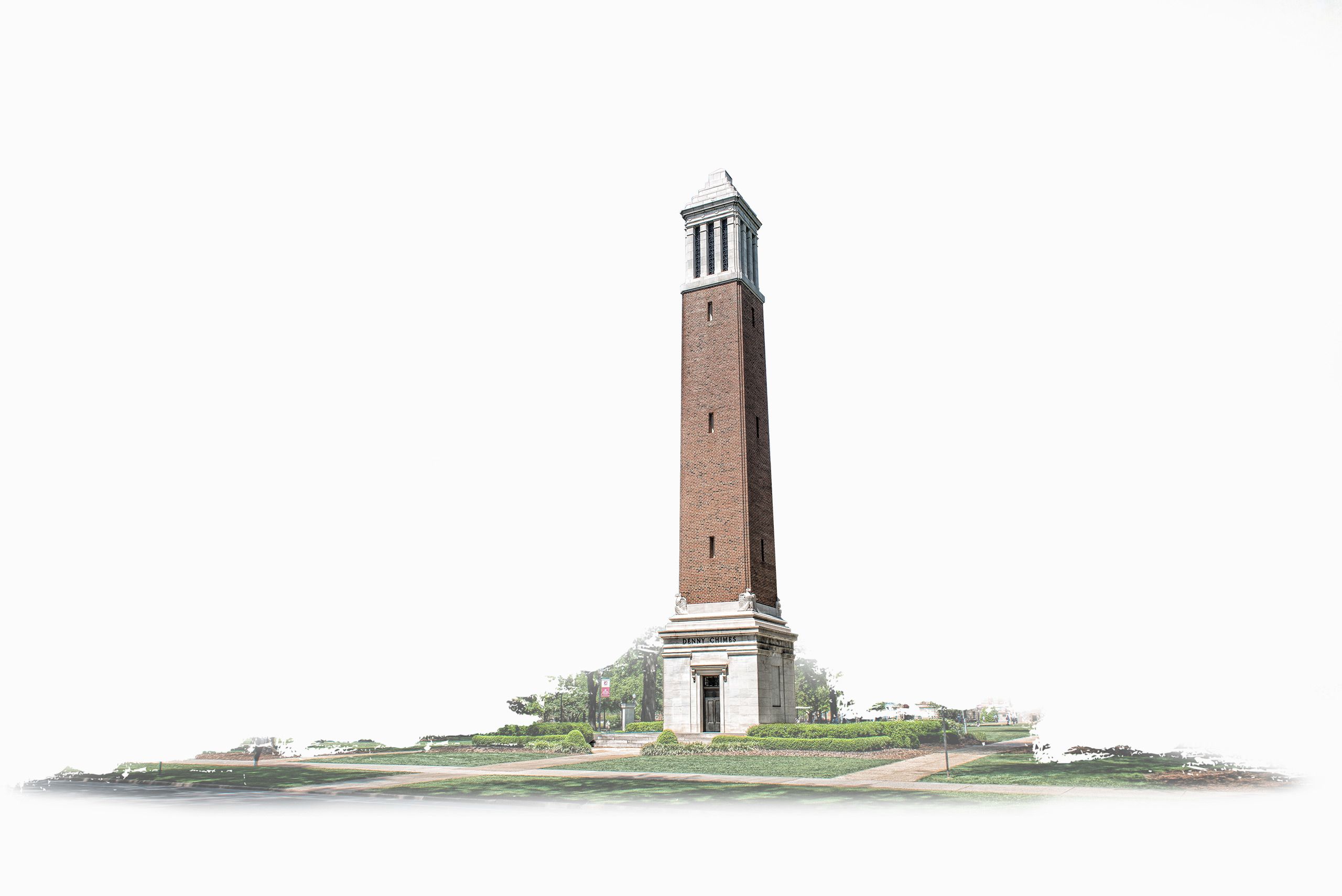
DENNY CHIMES
Directly across the Quad from Gorgas Library stands Denny Chimes, built in honor of UA President George H. Denny. Around the base of Denny Chimes are handprints and footprints of Crimson Tide football legends. Denny Chimes rings out the hours and also plays for special occasions, such as Veterans Day programs, memorials and celebrations.
THE PRESIDENT'S MANSION
Located opposite University Boulevard from Denny Chimes and directly adjacent to Rose Administration Building, the President’s Mansion houses the University president and his family. One of only four buildings on campus that survived the Civil War burning of the University in 1865, the historic Greek Revival-style mansion contains a great deal of historical significance and beauty for the Capstone and the Tuscaloosa community.
ROSE ADMINISTRATION BUILDING
Completed in 1969 and named for President Frank A. Rose, Rose Administration Building is centrally located on campus and is the University’s administrative headquarters. The president and all vice presidents occupy offices in the building. The Graduate School is located on the first floor. Visitors and students alike enjoy taking pictures in front of the unique bull elephant topiary in front of the building.
STUDENT RECREATION CENTER
The Student Recreation Center with the Outdoor Pool Complex (the Rec) is the main building of the three UREC facilities that also include the Aquatic Center and the Robert E. Witt Student Activity Center. The Rec is home to Intramural Sports, Sport Clubs, Outdoor Recreation, Group Exercise and Fitness Services, and Drayer Physical Therapy unit. The SRC consists of four group exercise studios, six racquetball courts, one combative art studio, climbing wall, multi-activity room, personal training studio, a 25-yard four-lane indoor lap pool, the north gym with five basketball courts, the south gym with four basketball courts, an upstairs cardio area that also includes adaptive cardio equipment, and a downstairs weight room, family changing rooms, men’s and women’s locker room facilities, an outdoor pool complex, a 12-court tennis complex, and a multi-use 29-acre fields complex.
MALONE-HOOD PLAZA
On June 11, 1963, segregation in the UA student body officially ended as Vivian Malone and James Hood registered for classes at Foster Auditorium, following Gov. George Wallace’s unsuccessful “stand in the schoolhouse door” that made headlines around the globe. Foster Auditorium was one of several buildings on campus built with Public Works Administration funds. It was completed in 1939 and renovated in 2010, with a plaza honoring Vivian Malone Jones and James Hood and a clock tower honoring Autherine Lucy Foster, the three Black students whose enrollment began desegregation on UA’s campus. Summer 2023 marked the 60th anniversary of this historic event, commemorated by public events on campus and a yearlong series of programs featuring speakers and musical performances.
WOODS QUAD
The academic buildings surrounding Woods Quad — Presidents Hall, Woods Hall, Clark Hall and Garland Hall — are premier examples of the ornate Victorian architecture favored immediately after the Civil War. Woods Quad was the original campus Quadrangle and the site of the first Alabama football game.
THE ROUND HOUSE
Built in Gothic Revival style in 1860, the Round House stands in the shadow of Gorgas Library. A guard house during the University’s days as a military school and one of just four buildings left standing after federal troops burned the campus in the waning days of the Civil War, it is said to be haunted by Civil War ghosts. The Round House is now a memorial to all UA honor societies.
WADE HALL
The University of Alabama officially dedicated Wade Hall in honor of Dr. Archie Wade, the first Black faculty member at the Capstone, during a ceremony on Nov. 3, 2021. In 1970, Wade joined the UA faculty in the department of kinesiology, where he worked for 30 years. During that time, he earned his doctorate from UA, achieved the status of tenured professor, and was a founding member of the Black Faculty and Staff Association. In 2013, during the 50th anniversary celebration of the integration of the University, a plaque honoring Wade was placed in the building that now bears his name.
SABAN FIELD AT BRYANT-DENNY STADIUM
Saban Field at Bryant-Denny Stadium is not only one of the most iconic facilities on The University of Alabama campus, but it is also often one of the most visited destinations in the state. Located on the southwestern edge of campus, the history-laden stadium ranks among the nation’s top 10 on-campus football stadiums with a seating capacity of 100,077. Bryant-Denny Stadium derives its name from Coach Paul William Bryant and Dr. George H. Denny, and in 2024, the field was dedicated in honor of Coach Nick Saban.
AMELIA GAYLE GORGAS LIBRARY
Located opposite the Quad from Denny Chimes and forming the north leg of the UA Quad, the Amelia Gayle Gorgas Library supports teaching and research needs in humanities, social sciences and government information as the campus’s main library. Among the research libraries in the state of Alabama, Gorgas Library provides the latest technology-driven services and unparalleled print and online research collections. Gorgas Library is named for Amelia Gayle Gorgas, the first female librarian at The University of Alabama, and was the first academic building on campus named after a female. Students and faculty make close to 900,000 visits to the Library each year.
THE UNIVERSITY OF ALABAMA STUDENT CENTER
The University of Alabama Student Center is the heart of campus. The Student Center hosts different events and programs for students, student organizations, University departments, faculty and staff. The staff also partners with student groups and University departments to organize events for the student body. In addition, spaces can be reserved for student organizations and University departments. The UA Student Center’s staff enhances each student’s learning experience by supporting, supplementing and complementing the overall academic, research and service mission of The University of Alabama with a wide range of high-quality services, collaborative programming and leisure time activities.
SCIENCE AND ENGINEERING COMPLEX
The Science and Engineering Building opened in fall 2009. Adjacent to Shelby Hall, the building features state-of-the-art teaching and research labs as well as collaborative space to encourage interdisciplinary work and student engagement. The facility is U-shaped and similar to Shelby Hall in exterior appearance. The 212,000-square-foot structure connects to Shelby Hall on the northeast corner with first-floor access between the two buildings. It is home to the all-freshman chemistry instructional laboratories; biological sciences teaching labs (including freshman and upper-level labs); parts of the Styslinger College of Engineering including faculty and students from the chemical and biological engineering and computer science departments; science teaching labs for the College of Education; and space for the Science in Motion biology program. In addition, the building houses the administrative offices of the department of biological sciences along with research facilities for faculty and students from the department.
THE EDGE INCUBATOR AND ACCELERATOR
The EDGE Incubator and Accelerator include The EDGE, a 26,000-square-foot off-campus business incubator that opened in February 2019 as a collaboration between UA, the City of Tuscaloosa and the Chamber of Commerce of West Alabama, and the EDGE Labs, an on-campus wet laboratory that serves as the strategic counterpart to The EDGE. The EDGE Labs feature laboratories and equipment necessary for new businesses and provide technical infrastructure that helps UA faculty, researchers and students develop and test processes and prototypes that can be translated into products for the marketplace. The EDGE Incubators are a partnership between the Culverhouse College of Business and the Office for Research and Economic Development.
AUTHERINE LUCY HALL
Autherine Lucy Hall is the home of the College of Education. In June 2020, the University of Alabama System Board of Trustees convened a working group to conduct an in-depth review of named buildings, structures and spaces on UA System campuses relative to its fundamental shared values. The Board of Trustees voted to amend the name of Graves Hall on The University of Alabama’s campus to Autherine Lucy Hall in honor of Dr. Autherine Lucy Foster’s leadership and to recognize her life as a dedicated educator. As the first African American student to attend the University of Alabama, Dr. Foster opened the door for students of all races to achieve their dreams at the University.
CAMPUS EVENTS
There is always something going on at UA. Lectures, book signings, plays, art exhibits and musical performances keep our campus and community intellectually and culturally stimulating. For a complete listing of campus events, visit the Campus Calendar. The School of Music, housed in the Moody Music Building, presents a number of events every school year. View their updated calendar at music.ua.edu/events. The department of theatre and dance offers selections ranging from musical comedy to experimental theatre. View their calendar at theatre.ua.edu.
THE STRIP
A brief stroll down University Boulevard takes you from Saban Field at Bryant-Denny Stadium to the Strip, an area of small shops, restaurants and cafés with a decidedly “Roll Tide!” atmosphere.
ON-CAMPUS RETAIL LOCATIONS
- The University of Alabama Student Center (Union Market, Subway, Auntie Anne’s, Wendy’s, Panda Express, Chick-fil-A, Blenz, Chicken Salad Chick and Low Tide)
- The Market at John England Hall
- Shake Smart at the Student Recreation Center
- Cooper Cafe at Hewson Hall
- The Fresh Food Company
- Lakeside Dining Hall + Dunkin'
- Julia's Market at Tutwiler Hall
- Presidential Terrace
- Law School Cafe
- Mary B's Market at Burke Hall
- Raising Cane's at Paty Hall
- Stewart's Corner at Lloyd Hall - (Pizza Hut Express and Chick-fil-A)
- Subway/The Bistro at Alston Hall
- Convenience Markets - (Moody Music, Science & Engineering Complex, The Bus Hub, Nursing School)
ON-CAMPUS COFFEE SHOPS
- Java City at Gorgas Library
- Starbucks at UA Student Center
- Starbucks Drive-Thru on Bryant Drive and University Boulevard
- Dunkin at Lakeside Dining Hall


Tuscaloosa was founded on December 3, 1819, and was named for Chief Tuskaloosa (which means “Black Warrior”). A pillar of the educational infrastructure for the state, Tuscaloosa is home to The University of Alabama, Shelton State Community College and Stillman College. Several multinational corporations, including Michelin Tires and Mercedes-Benz, have selected Tuscaloosa as a site for their manufacturing plants, establishing Tuscaloosa as a mainstay of the global economic community.
BAMA THEATRE
Once the community’s grand movie house, the Bama Theatre is now downtown Tuscaloosa’s visual and performing arts center, located at 600 Greensboro Avenue.
CAPITOL PARK
Tuscaloosa was the state capital from 1826 to 1846. The last vestiges of the capitol can be found at Capitol Park, a combination of original and recreated remains using building materials and architectural features. Visitors enjoy strolling the lawns, seeing the architectural footprint of the original capitol foundations and reading the historical markers. The park is located just west of downtown Tuscaloosa on Sixth Street.
CHILDREN'S HANDS-ON MUSEUM
The Children’s Hands-on Museum offers three floors with 25 exhibits for children of all ages to explore through play. Open Monday-Saturday from 9:30 a.m. - 5:00 p.m. and closed on Sundays and major holidays. Admission charged. 205-349-4235; 2213 University Boulevard.
HOLIDAYS ON THE PLAZA
During the month of December, visitors will enjoy ice skating, music, movie nights and more at the 60’ X 100’ outdoor ice rink at Government Plaza. Admission is free to all guests; however, skate pass tickets are required for skate rental and access to the ice rink.
DICKENS DOWNTOWN
Downtown Northport transforms into a scene from Dickens’ London on the first Tuesday of December. Merchants in Victorian dress open their shops, while carolers and a bagpipe group provide music. Horse-and-carriage rides, falling snow (arranged especially for the occasion) and an appearance by Queen Victoria launch the holiday season.
LIVE AT THE PLAZA
Live at the Plaza – Join the City of Tuscaloosa every Friday in June and July for free, live local music. Live at the Plaza is family (and pet) friendly. Bring your blanket or folding chairs.
KENTUCK
Across the Black Warrior River from campus is historic downtown Northport, a charming blend of old-fashioned shops, homes, modern folk art galleries and restaurants. An artists’ enclave thrives here, and the Gallery at Kentuck and the Kentuck Museum of Art showcase both folk and experimental artists. The focal point of the Kentuck art life is the Kentuck Festival of the Arts, which is held the third weekend in October. Tickets may be purchased in advance or on the day of the festival.
THE PARK AT MANDERSON LANDING
Longtime UA friends Lewis and Faye Manderson have given generously to the University through the years. To honor their loyalty and commitment to The University of Alabama, the park and northern entrance to the University has been named in their honor. Located on Jack Warner Parkway, the Park at Manderson Landing is enjoyed by the entire Tuscaloosa community.
PAUL R. JONES MUSEUM
The museum honors the late Paul R. Jones who, during his lifetime, amassed one of the largest collections of African-American art. In 2008, he donated 1,700 pieces of his collection to UA. The museum features a rotating selection of pieces from the Jones collection along with works by UA students and faculty. Open Monday-Friday, 9:00 a.m.-5:00 p.m.; First Fridays, 12:00 p.m.-8:00 p.m.; closed Saturday and Sunday. Free admission. 205-345-3038; 2308 Sixth Street.
MERCEDES-BENZ AMPHITHEATER
Nestled on the banks of the Black Warrior River, the Mercedes-Benz Amphitheater is within walking distance of the city’s downtown shops and restaurants and just a mile from the UA campus. The Mercedes-Benz Amphitheater is located at 2710 Jack Warner Parkway; 205-248-5280. Please visit the website for event and ticket information.
TUSCALOOSA RIVER MARKET
There’s nothing quite like buying local when it comes to fresh produce. Growers and farmers from around our community have selected their finest crops for you to enjoy. Come out and support local farmers while enjoying fresh and healthy foods. The Tuscaloosa River Market is located along the River Walk, 1900 Jack Warner Parkway; 205-248-5295.

